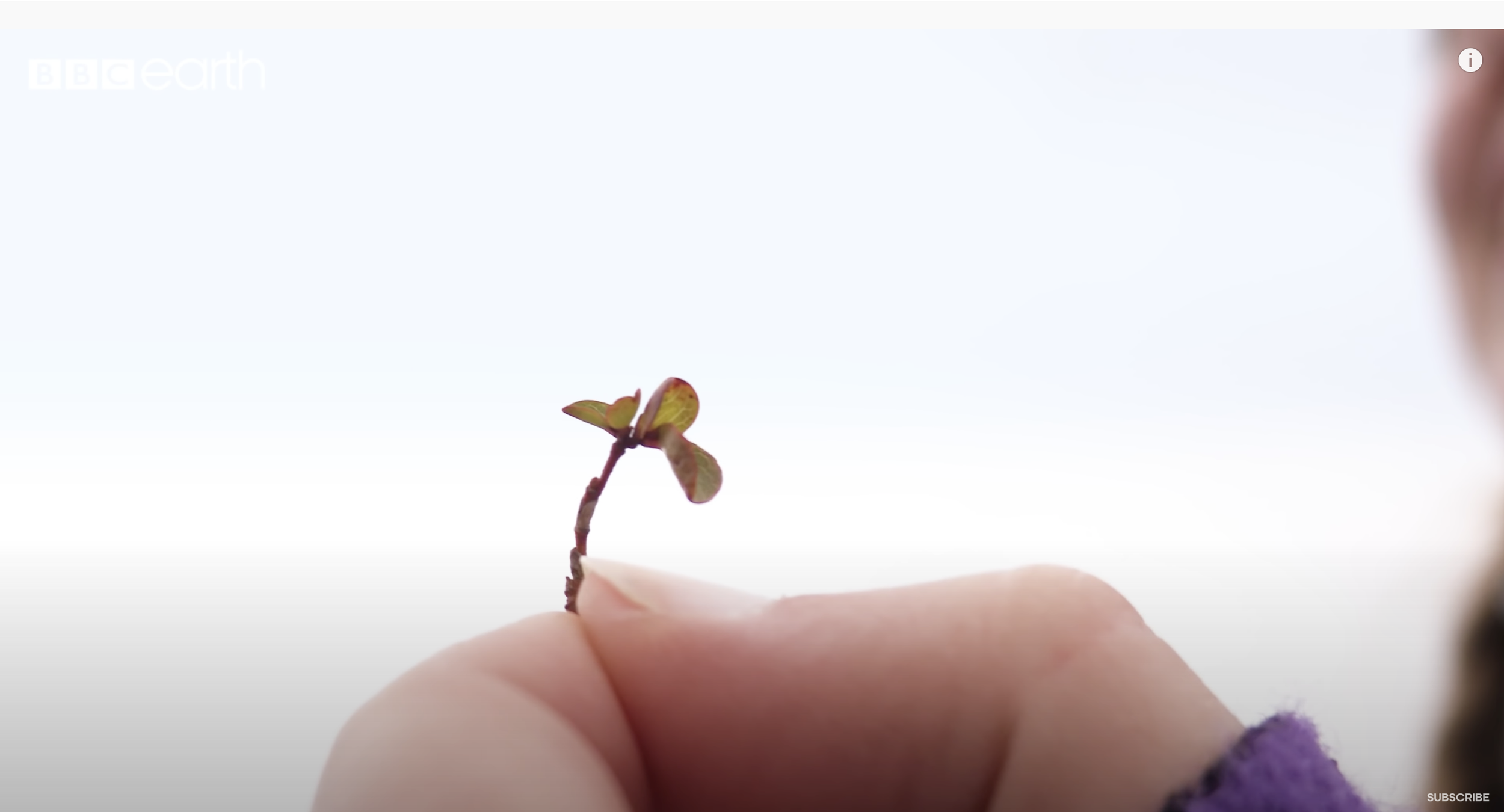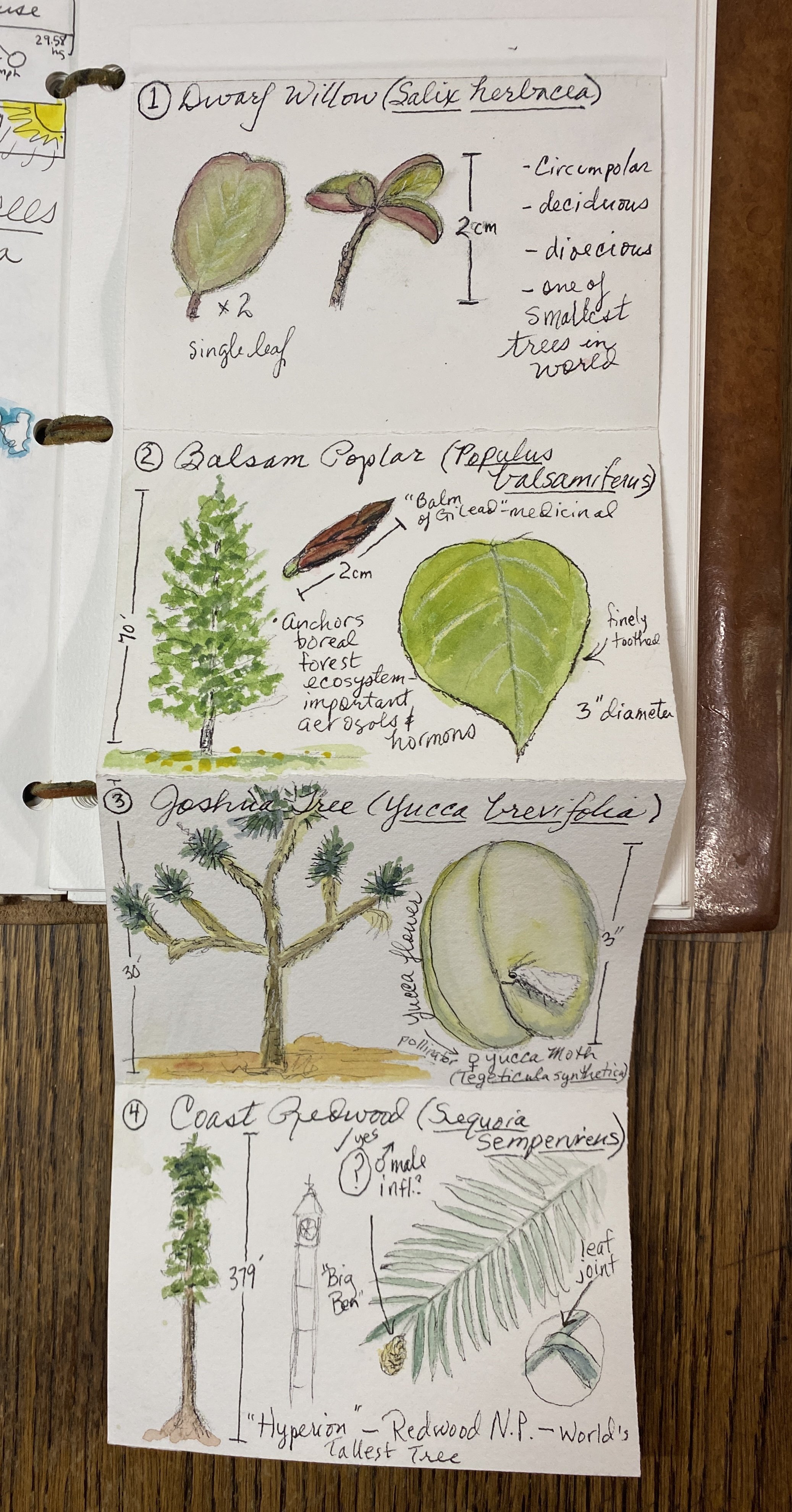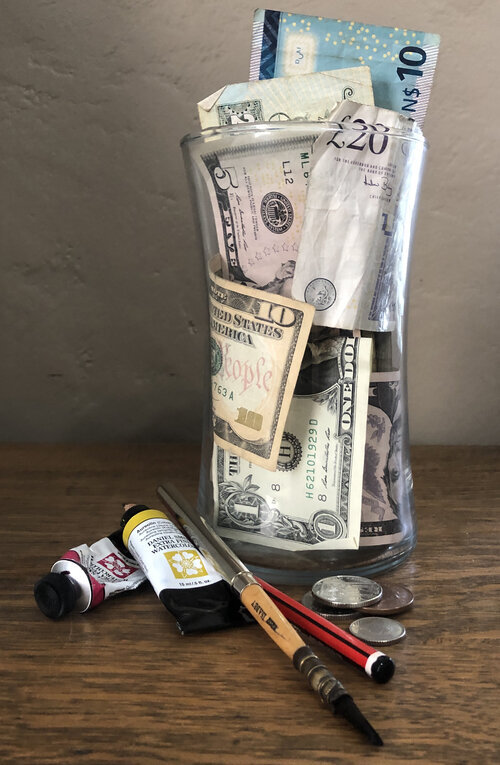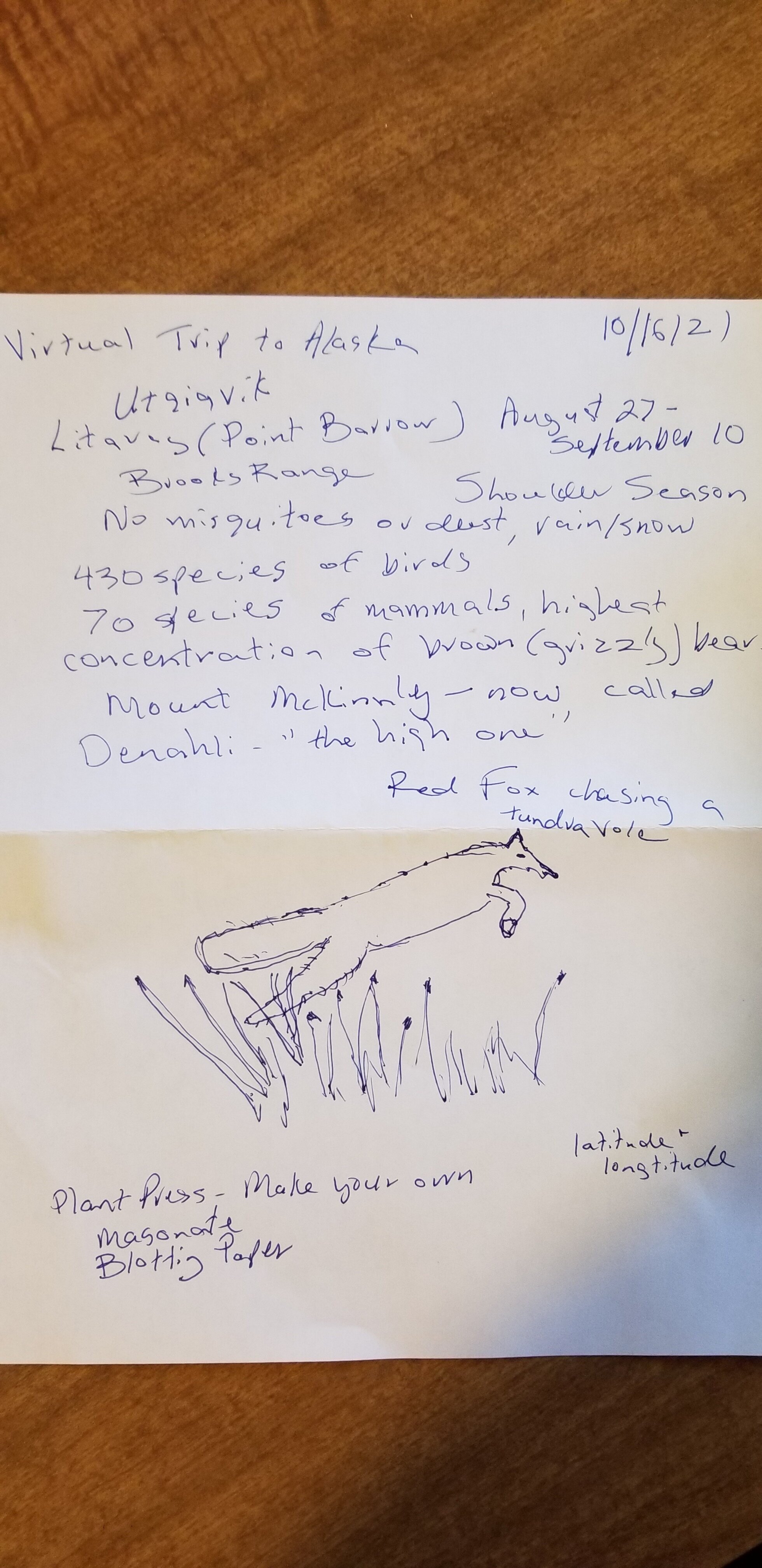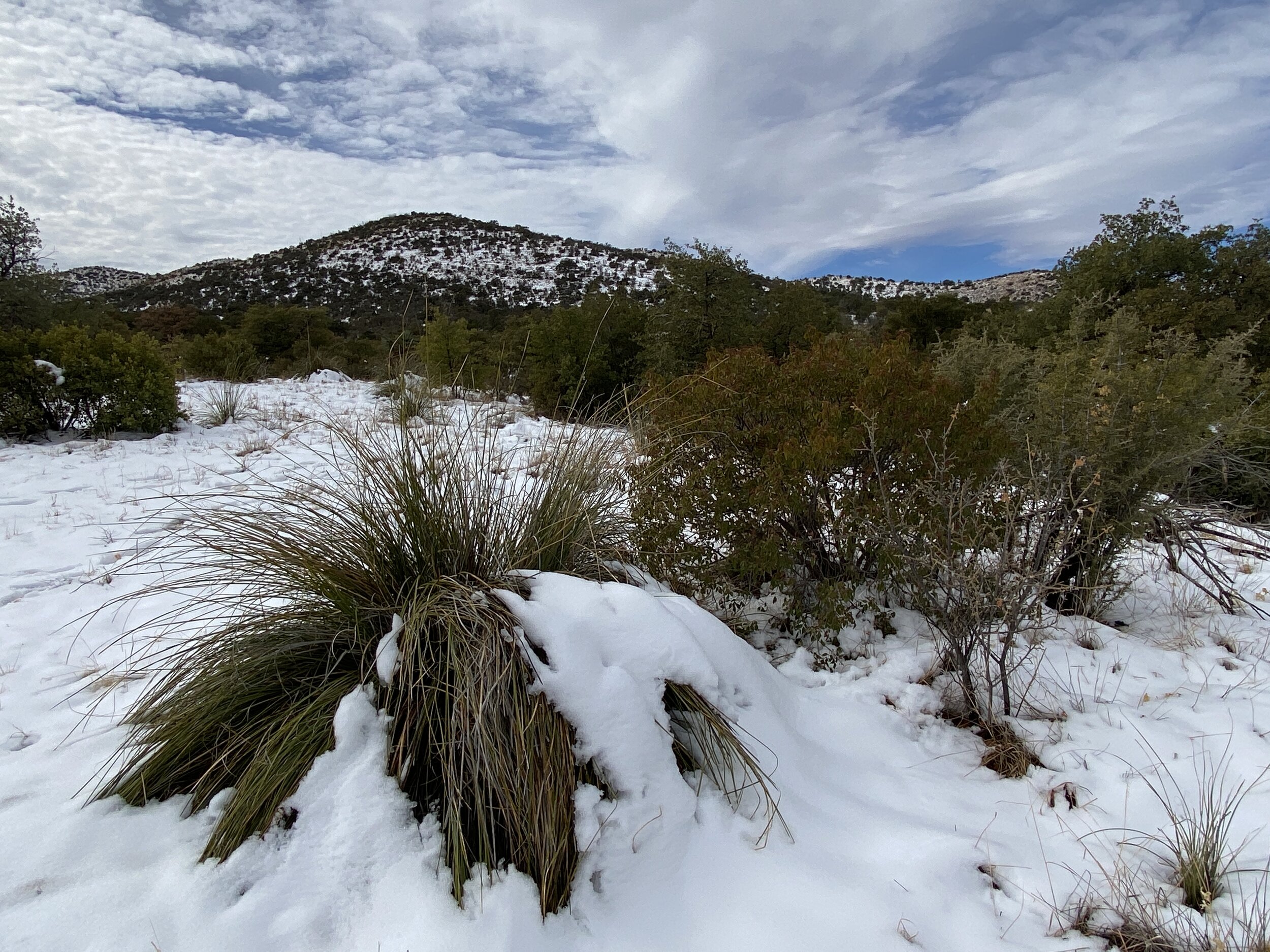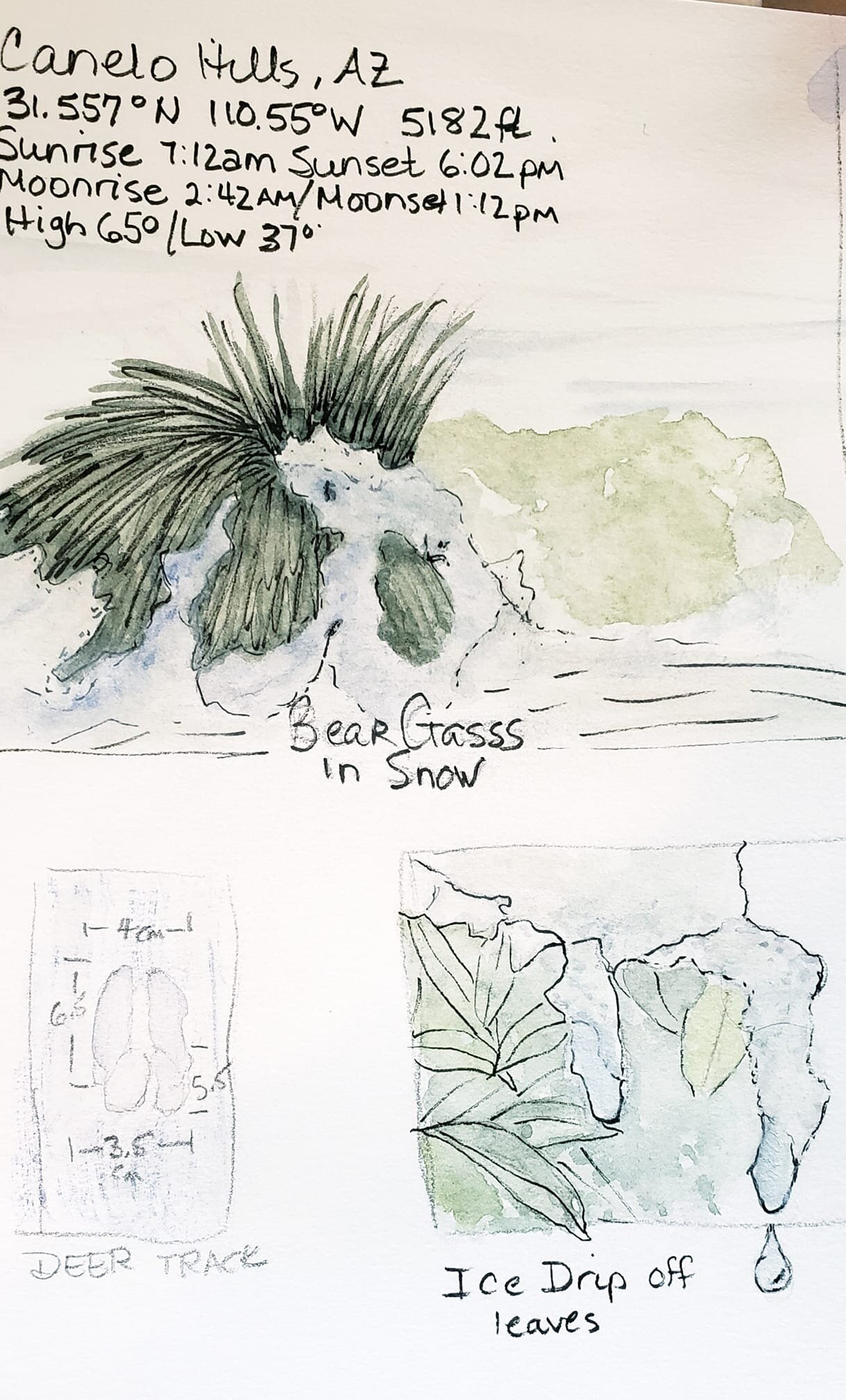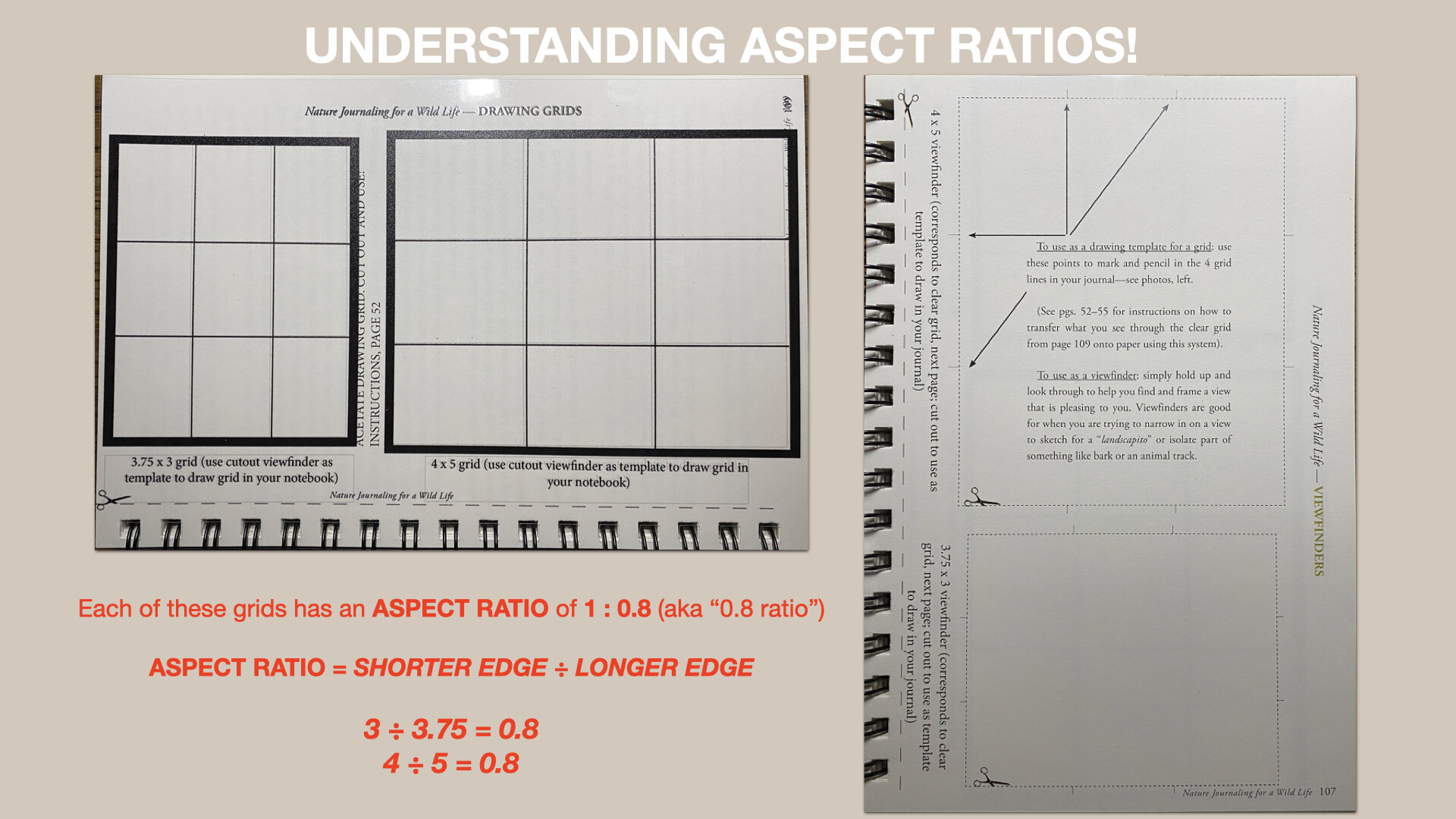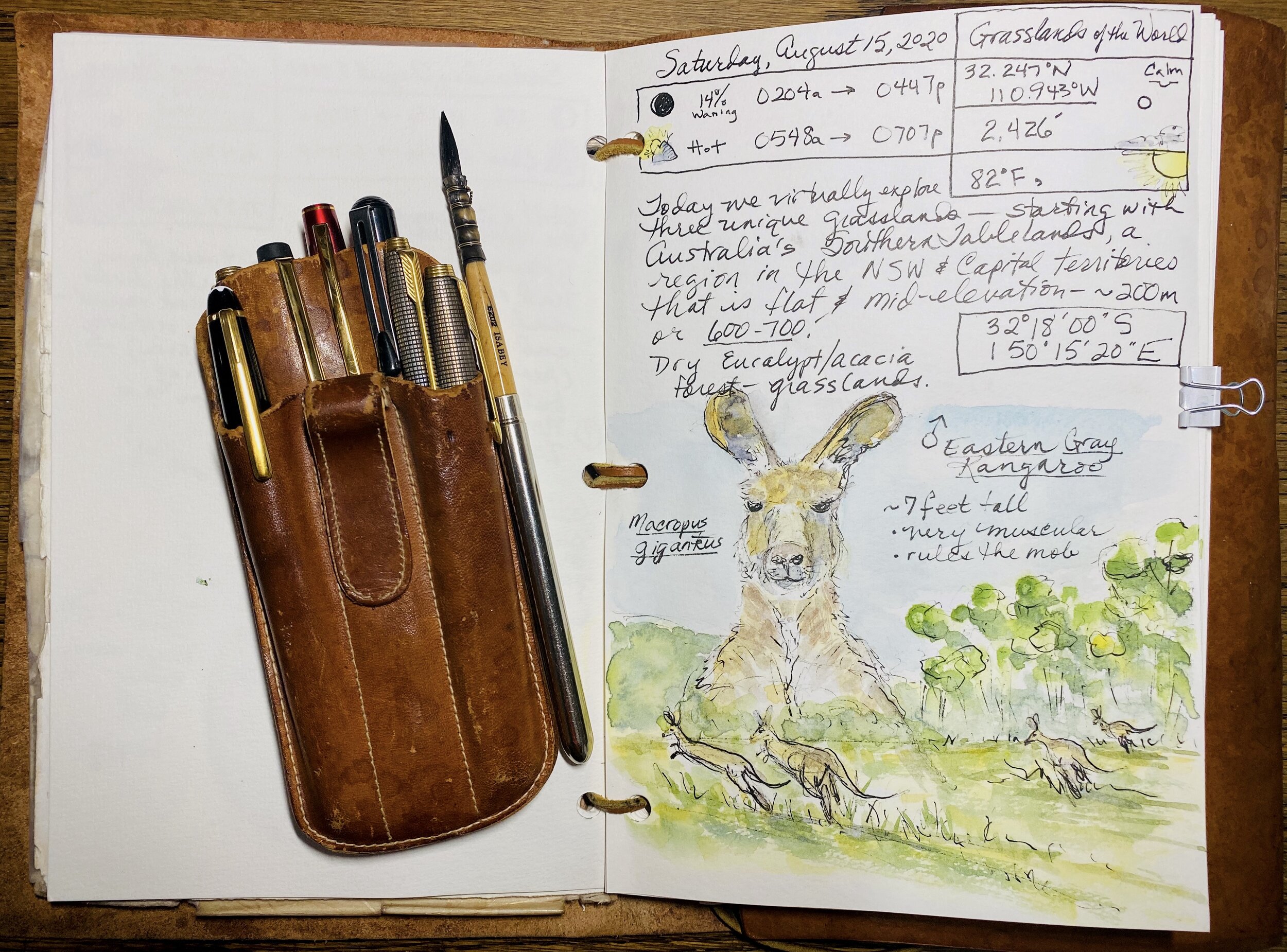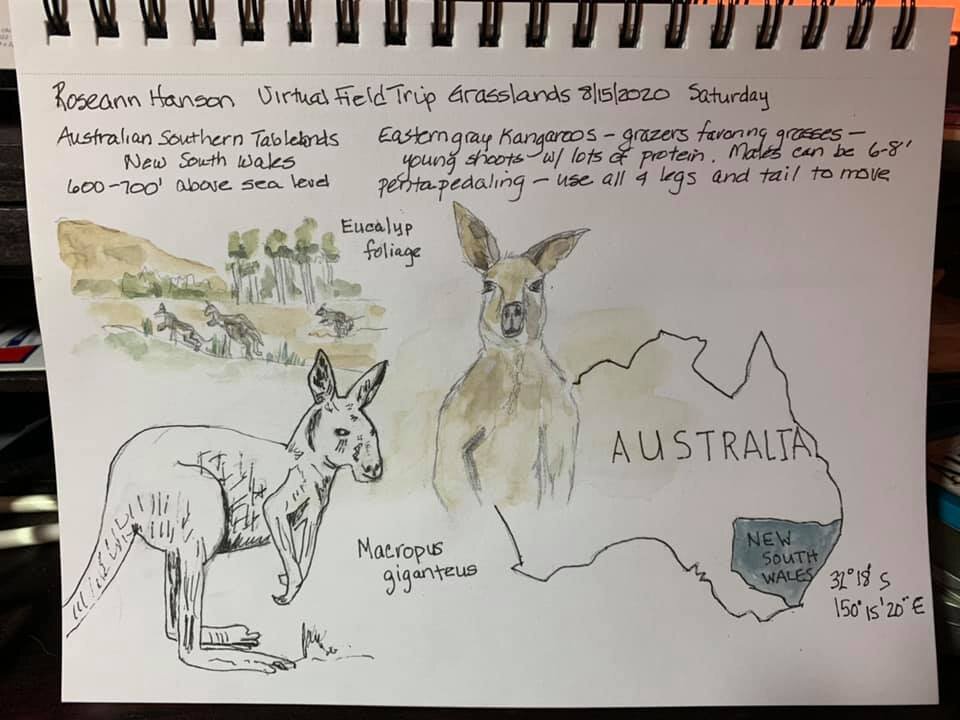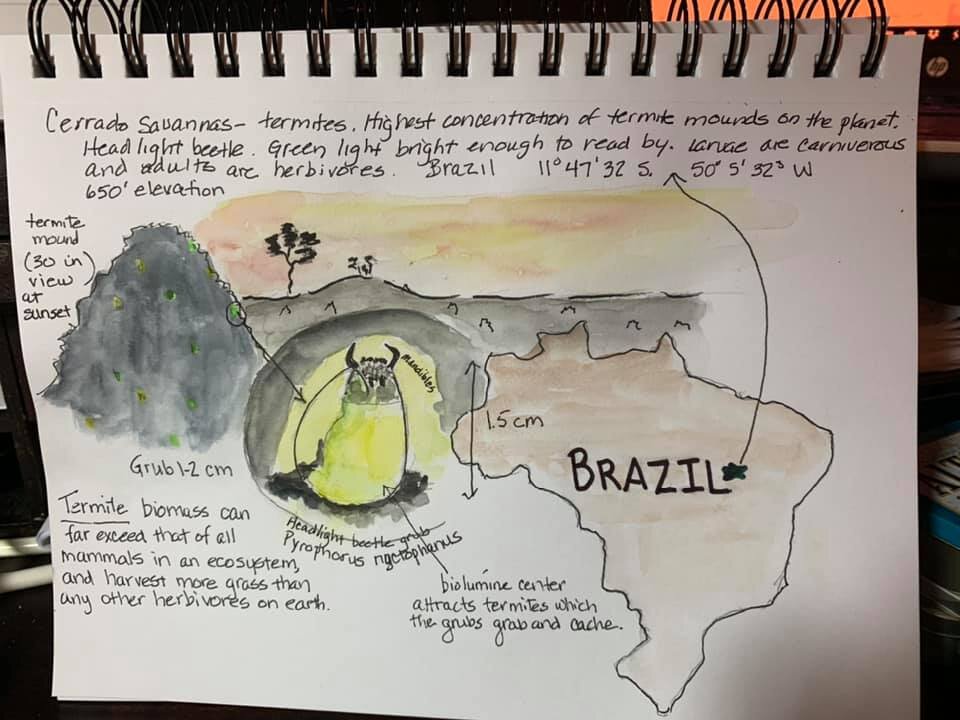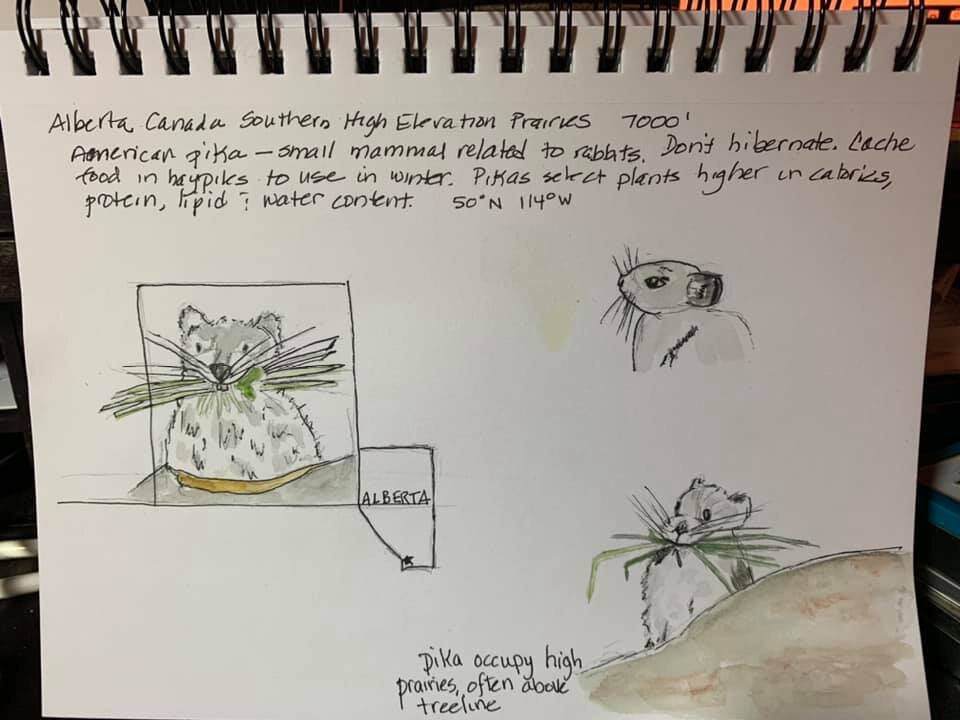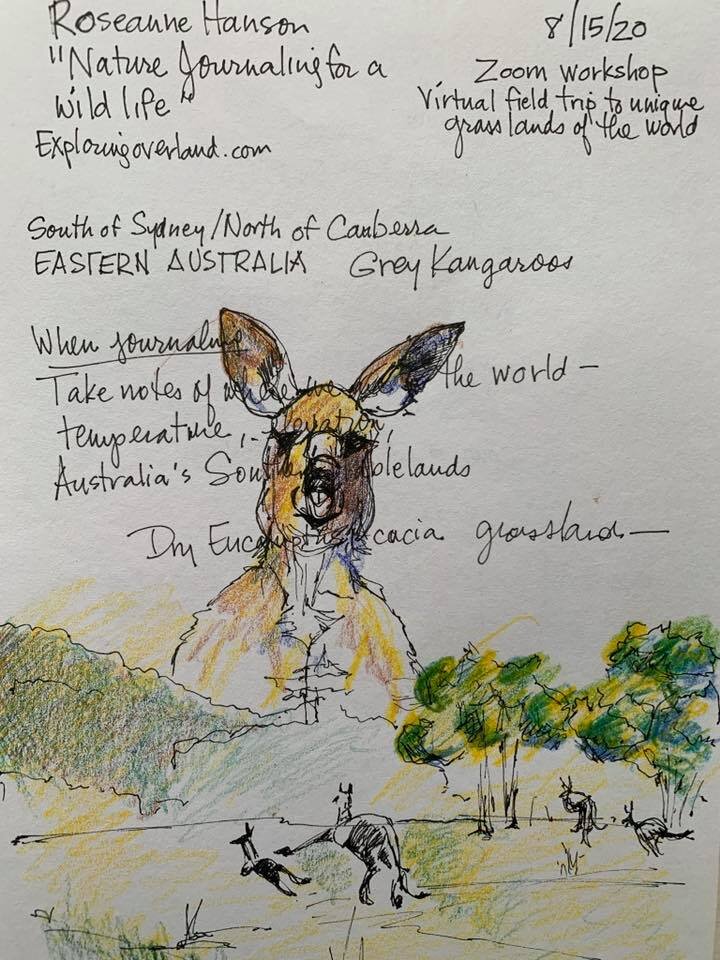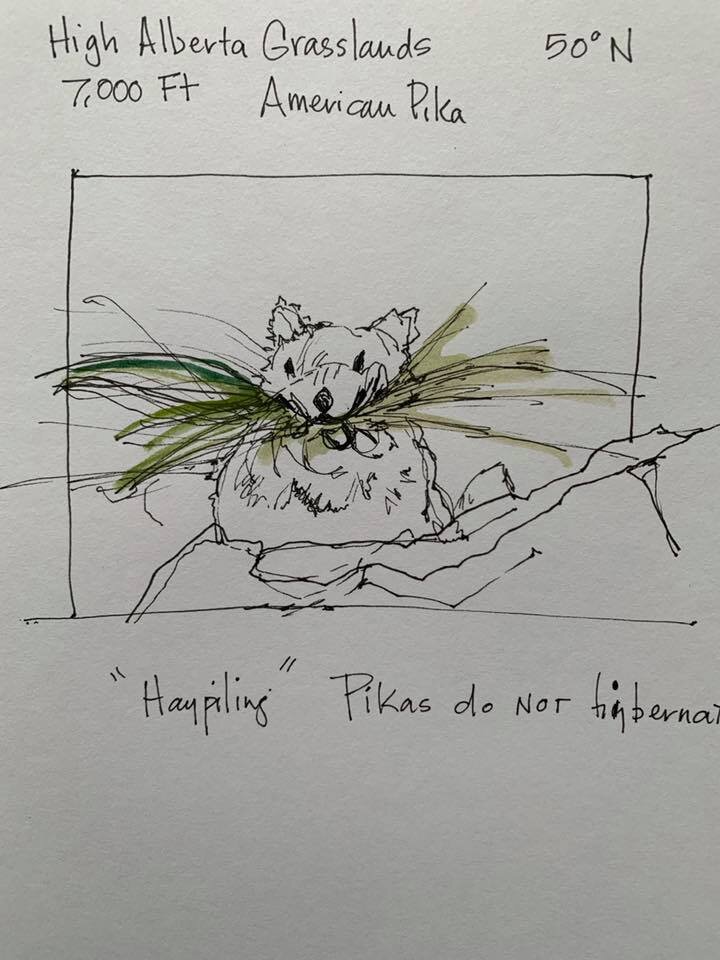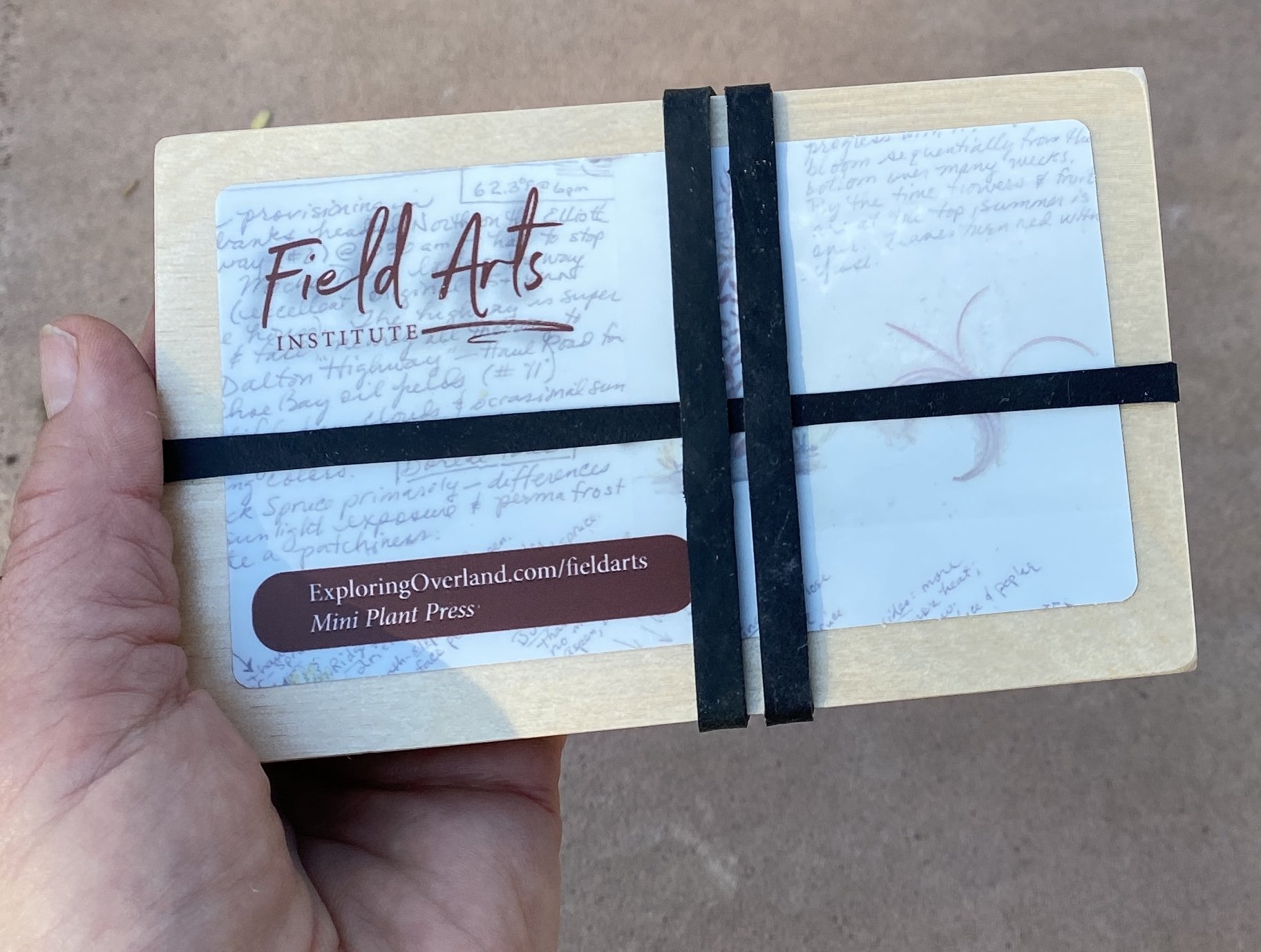Field Arts Workshop: Around the World in 80 Trees No. 1 (N. America)
Inspired by Jonathan Drori’s wonderful books Around the World in 80 Trees and Around the World Plants, we’re going to travel around the globe by region and sketch interesting, weird, iconic, or beautiful trees and tree-like plants.
Stop 1: North America!
What you’ll need: a multi-media sketchbook or an accordion style booklet (see below), pen and / or pencil for our base drawings, and then watercolor or colored pencil to quickly bring them to life.
TIP: I used a strip of heavy watercolor paper folded into four squares to create an “accordion” booklet to record my trees (8 total, 4 on each side).
Prepwork: have on hand a simple outline map of North America (from the Arctic to Panama) so you can sketch location points for each species.
Length: 2 hours
Downloads and Resources
Click to initiate download of a PDF of the workshop presentation (large file) * Please do not circulate this PDF; if you wish to share the workshop, please use the page link:
Locations of the 8 species for this workshop (these are not the ranges, but the site where the specimen we sketch is located).
Tip: Create an outline of North America in your journal so you can mark the site locations of our sketched species. Credit: TimVandevall.com
Books and References:
Treeline: The Last Forest and the Future of Life on Earth by Ben Rawlance
NYTimes article about Diana Beresford-Kroeger, a medical biochemist, botanist, organic chemist, poet, author, and developer of artificial blood. But her main focus for decades now has been to telegraph to the world, in prose that is scientifically exacting yet startlingly affecting, the wondrous capabilities of trees. She is featured in the Balsam Poplar chapter in Rawlance’s book.
Colors I use:
I favor a simple primary “triad” plus two extra colors: Manganese Blue (“cyan”), Quinacridone Rose (“magenta”), Aureolin Yellow (“yellow”), and Burnt Sienna and Indanthrone Blue, all Daniel Smith.
ROSEANN’S FINISHED ACCORDION PAGE
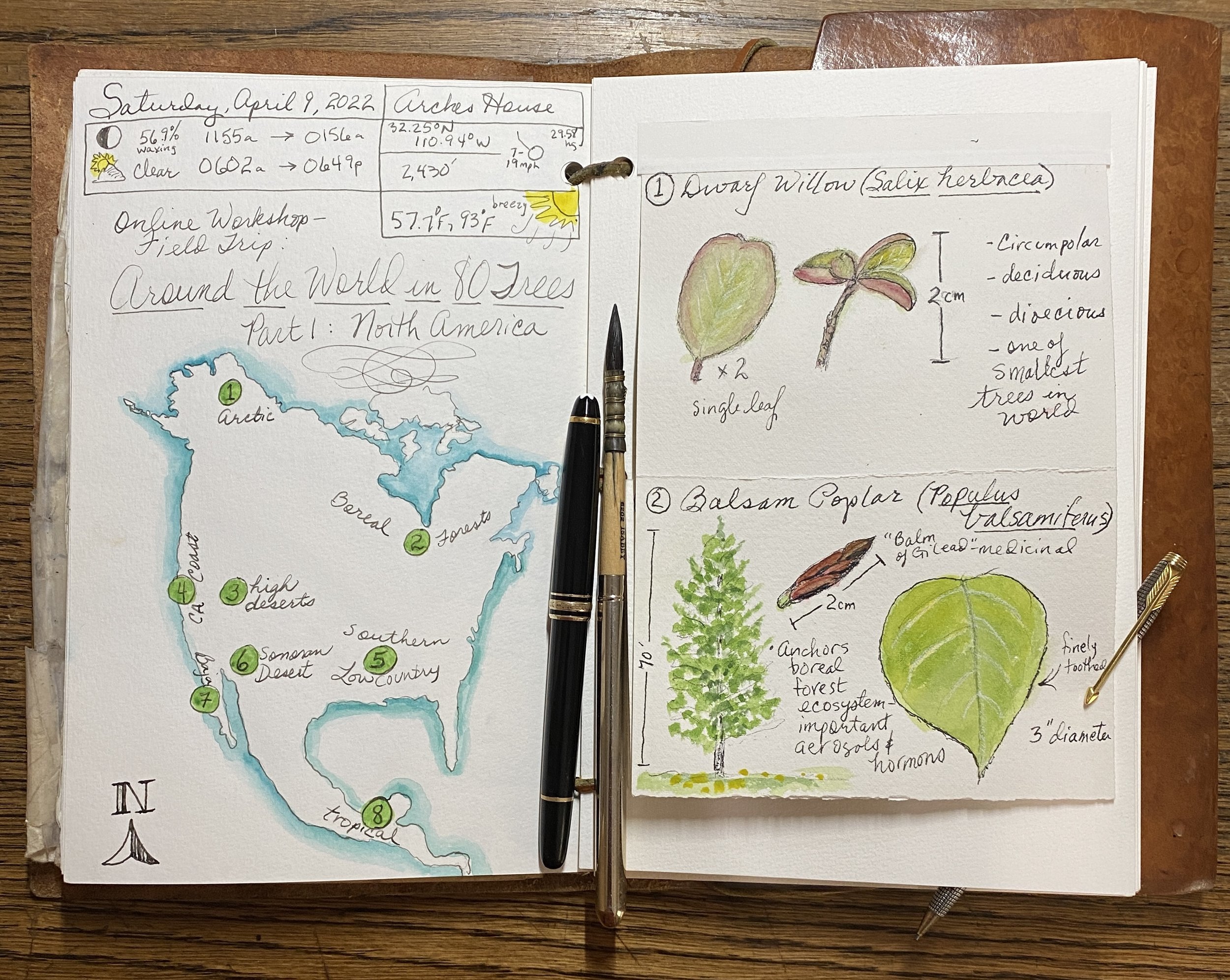

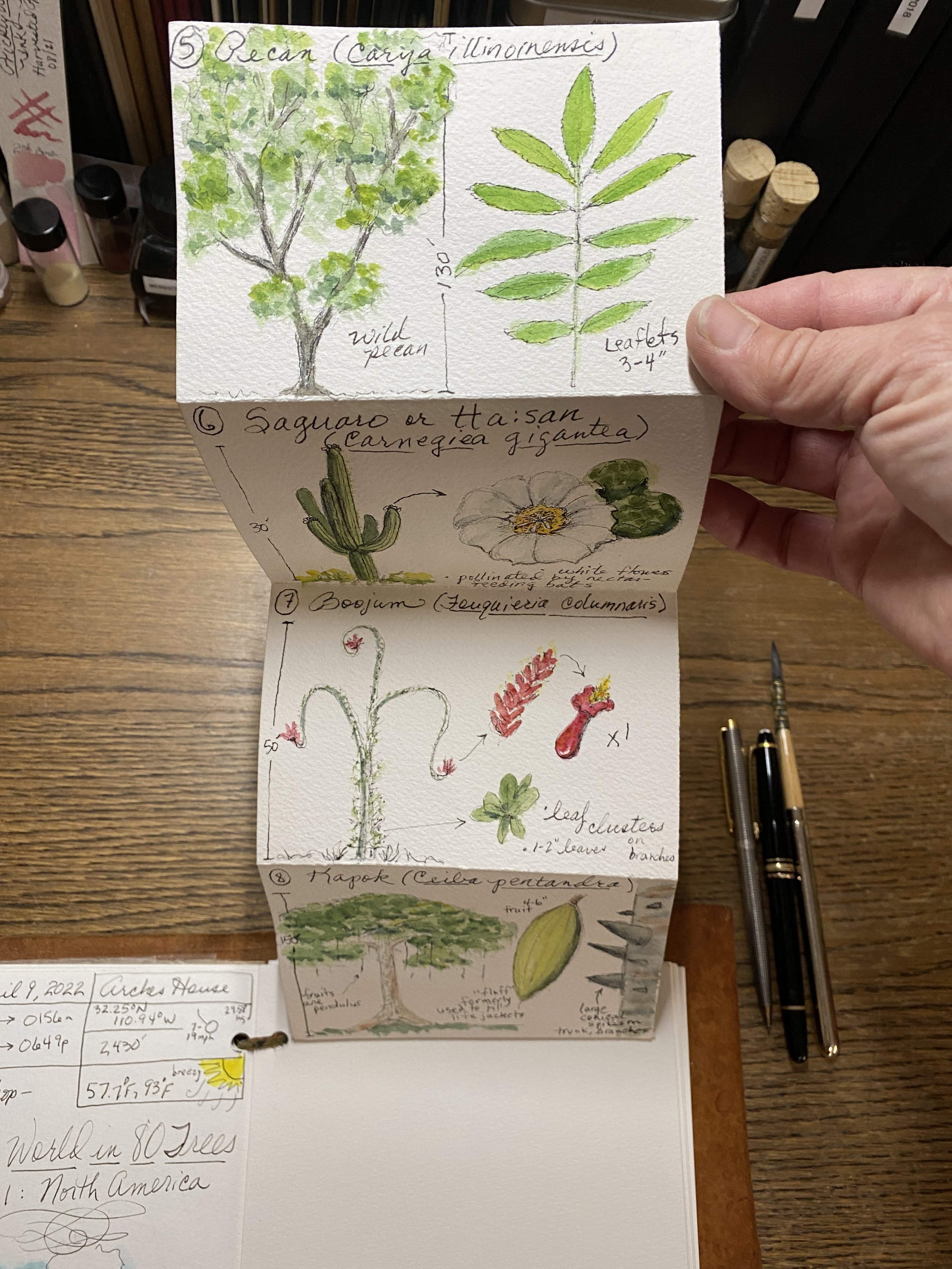
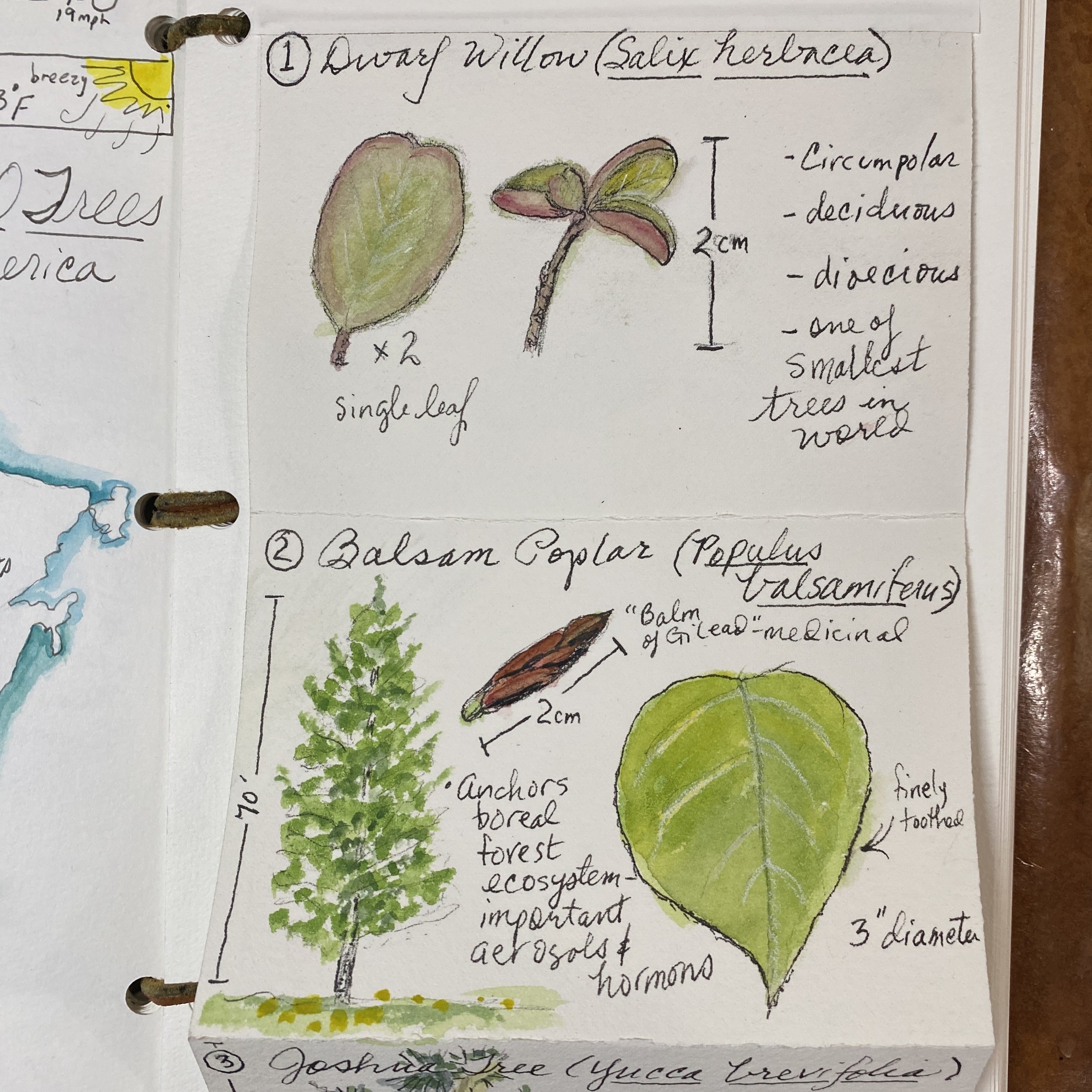
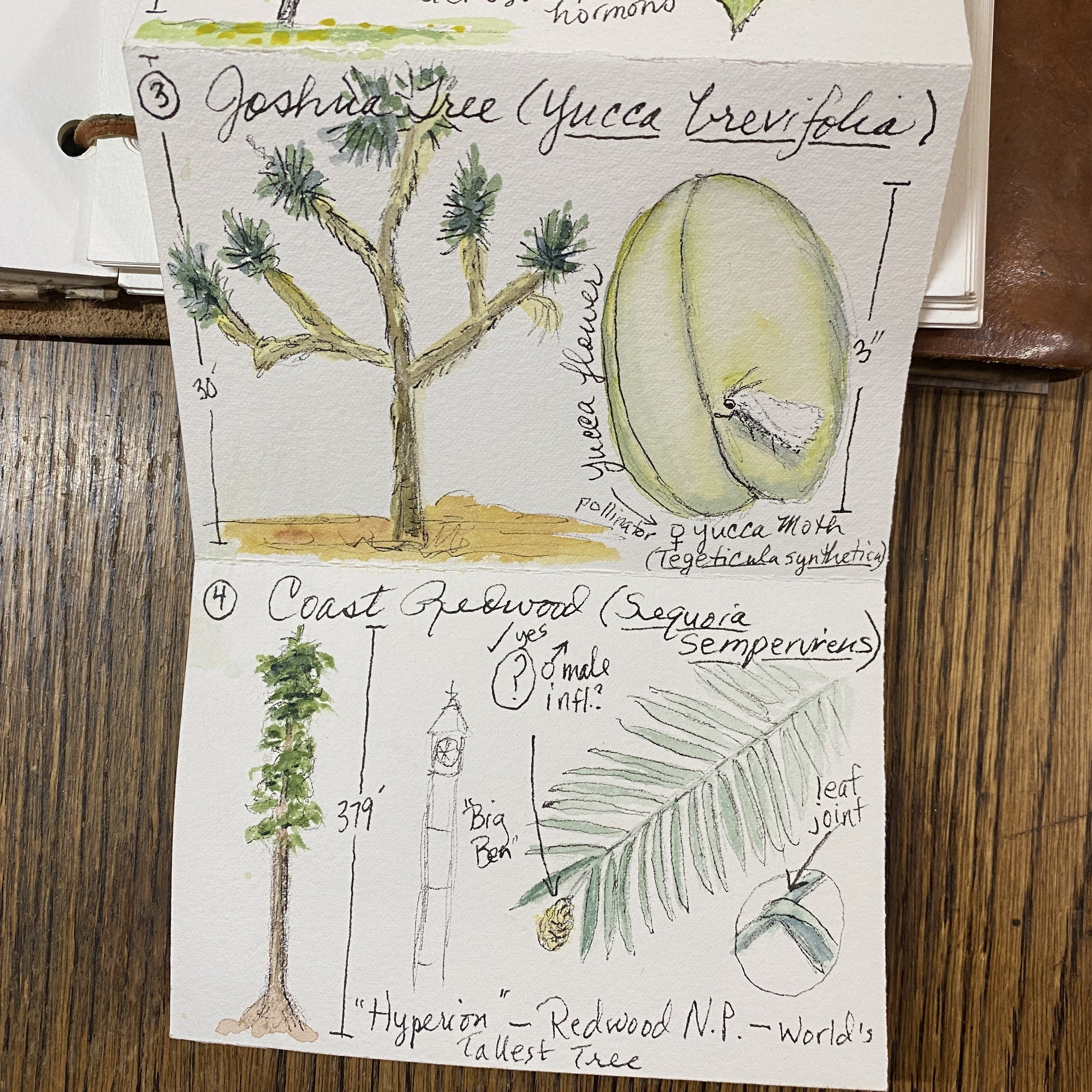
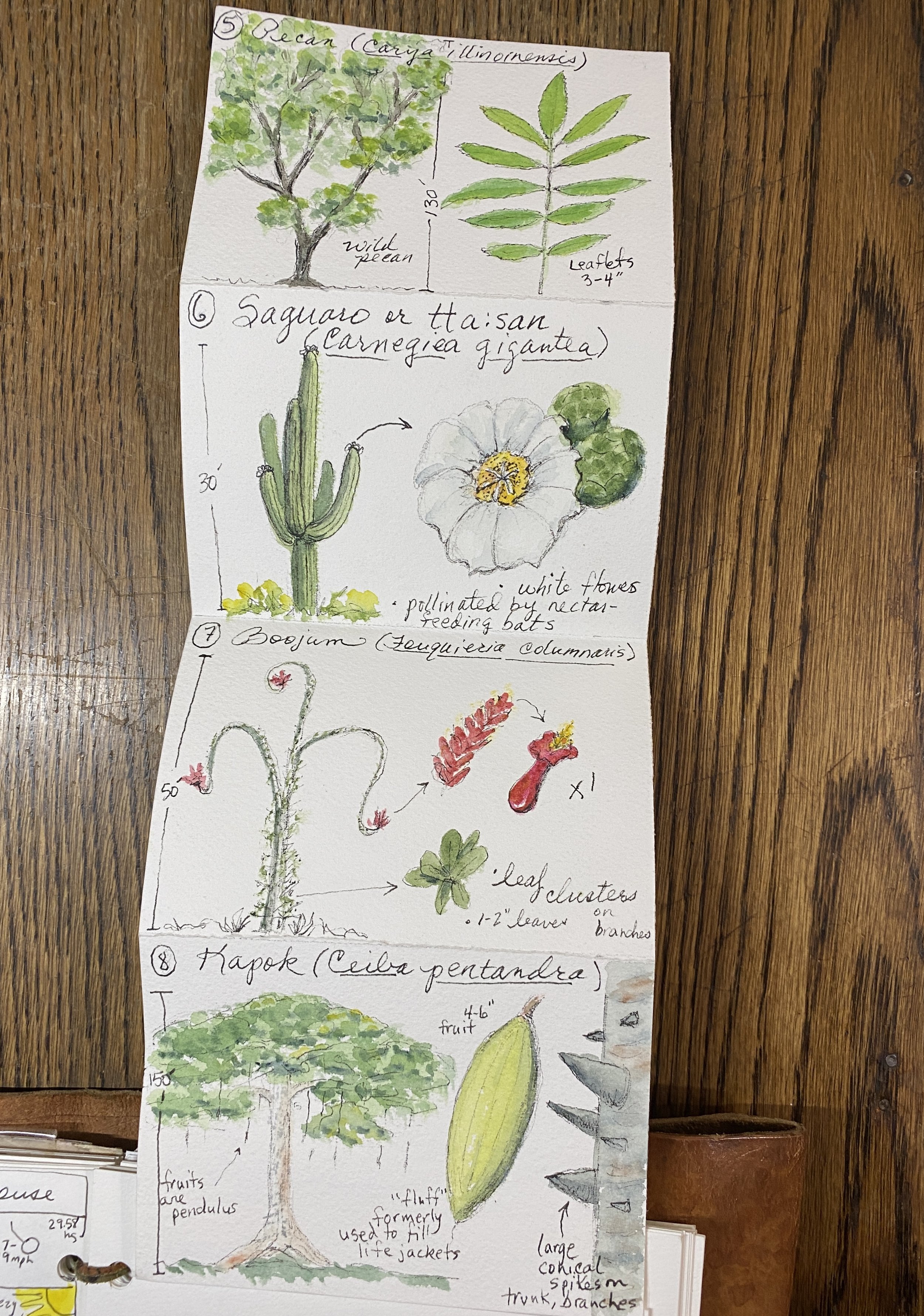
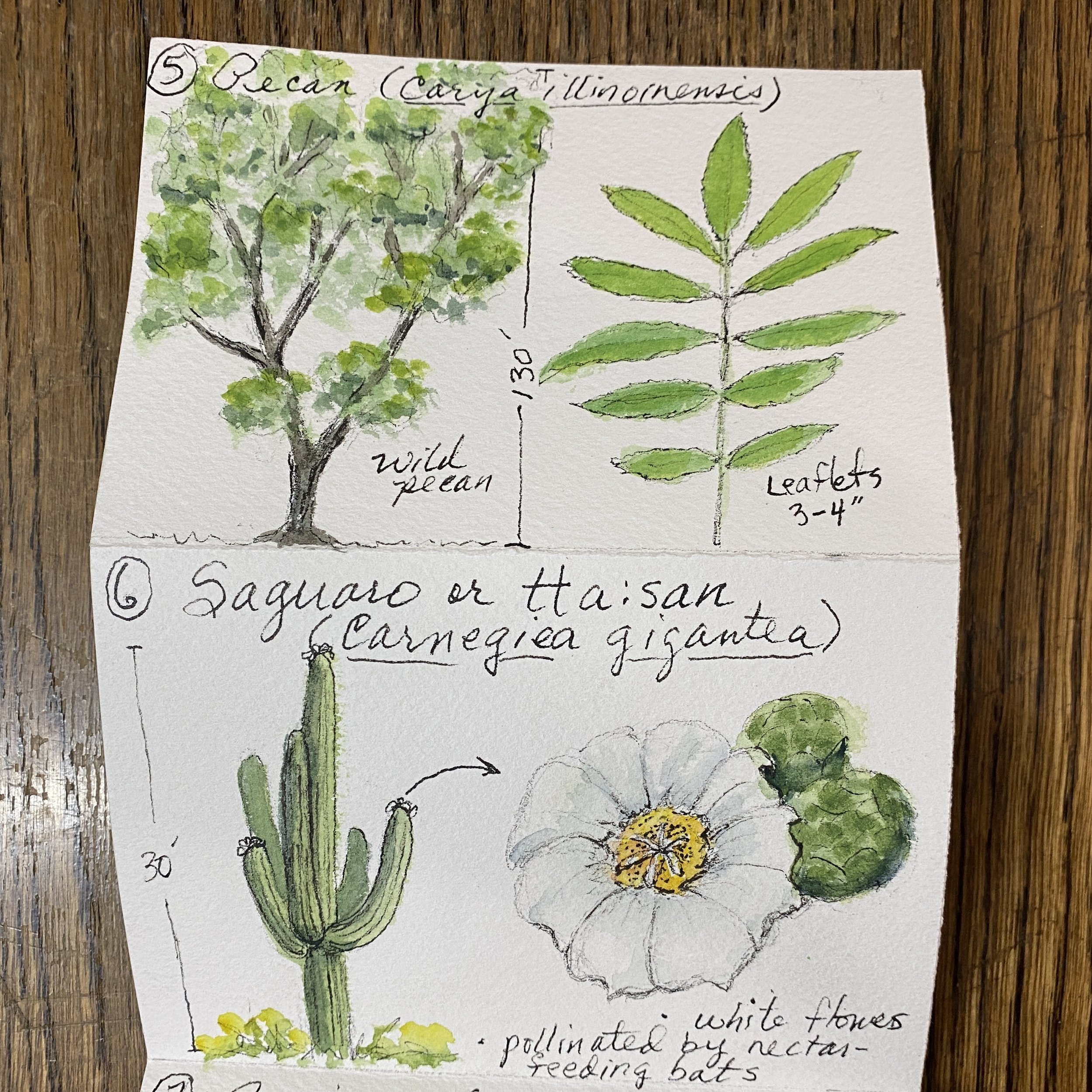
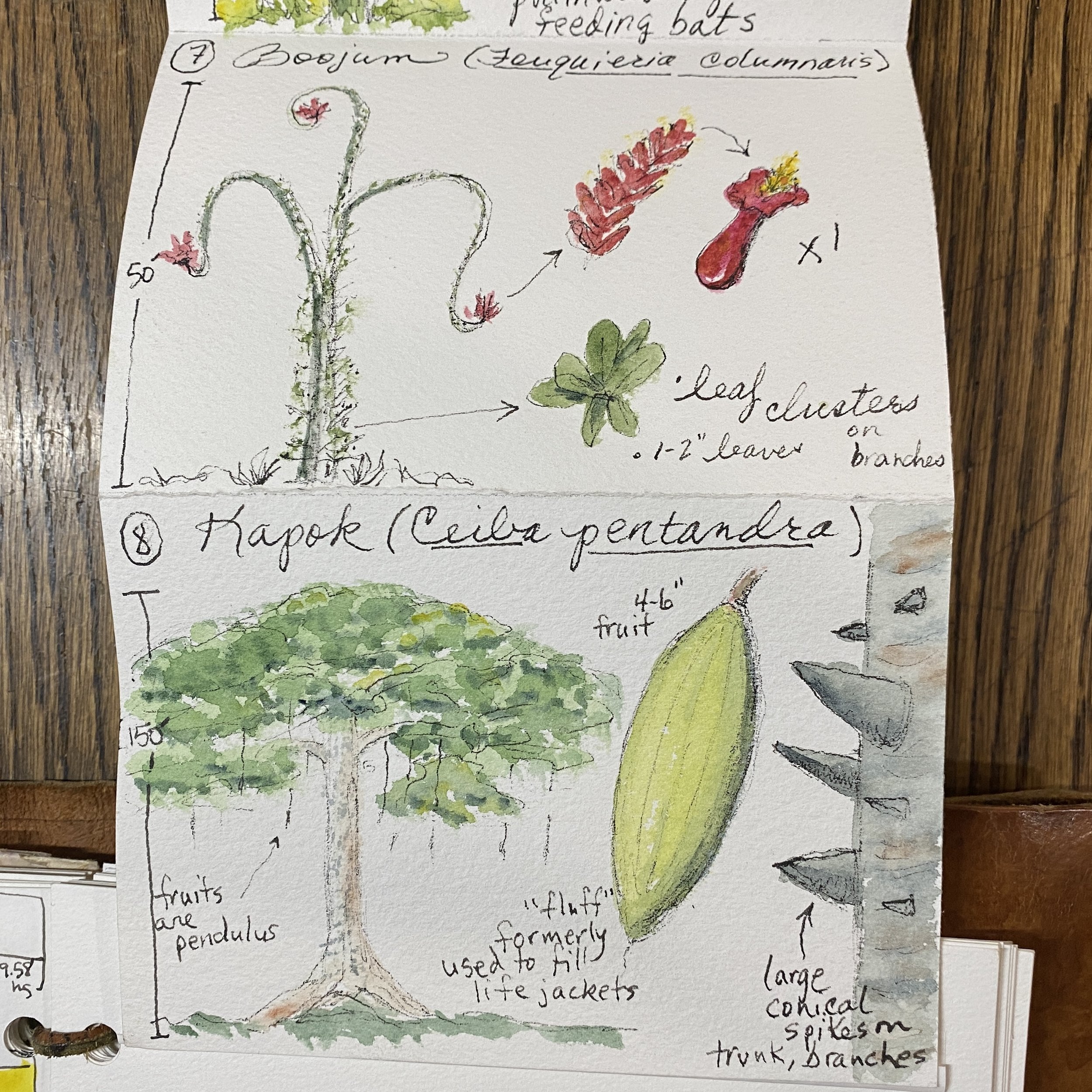
ATTENDEES’ Pages from the Workshop
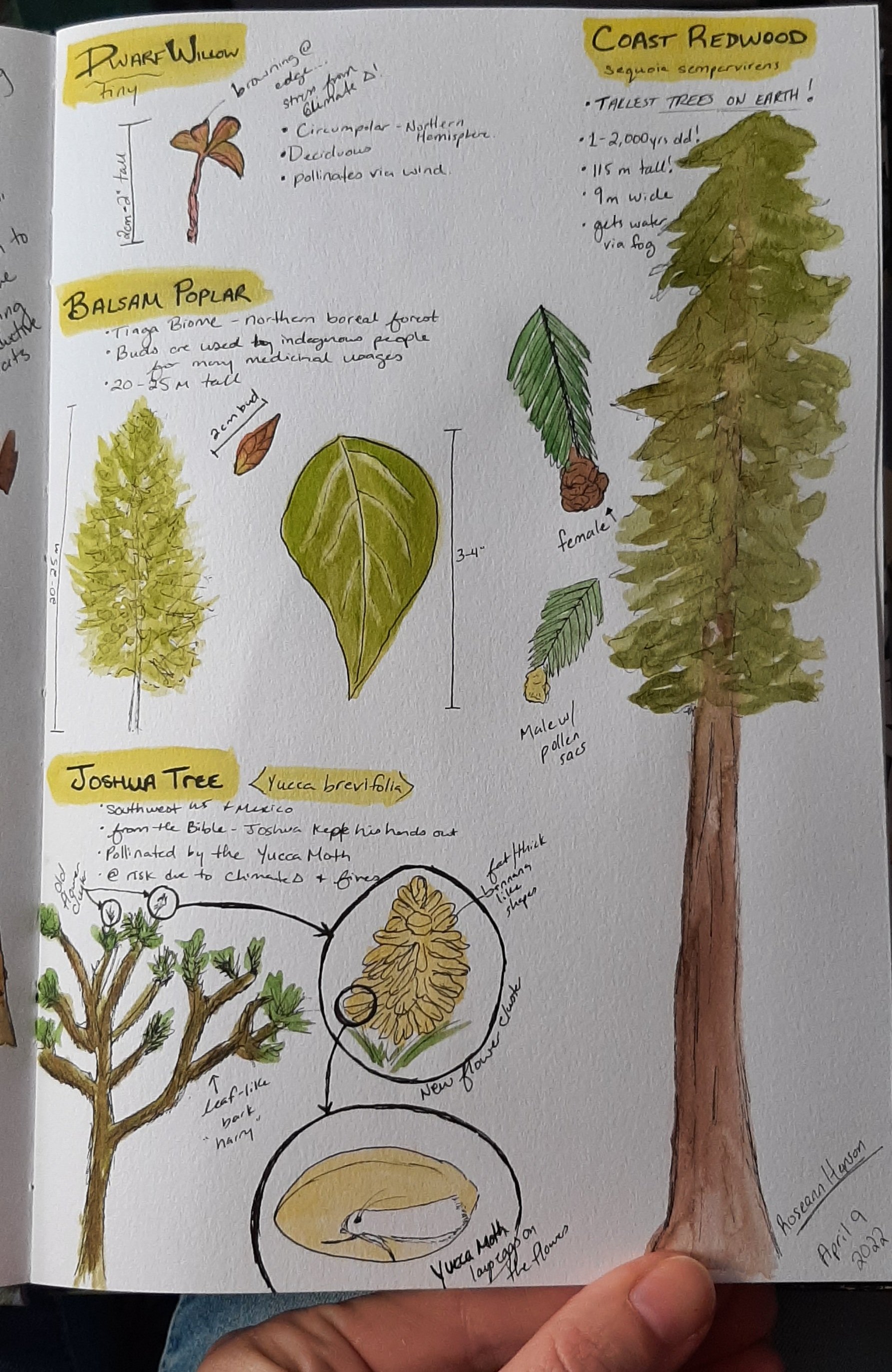

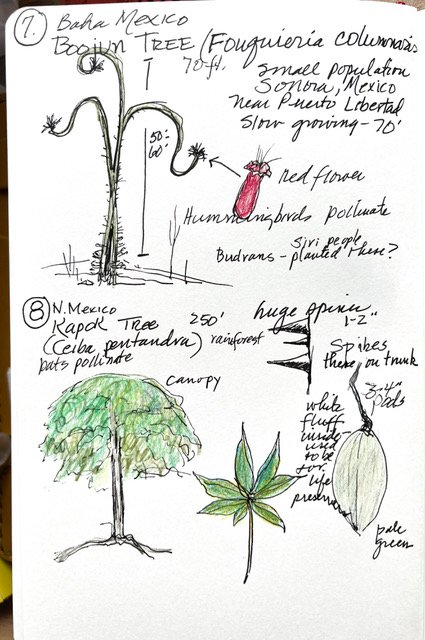
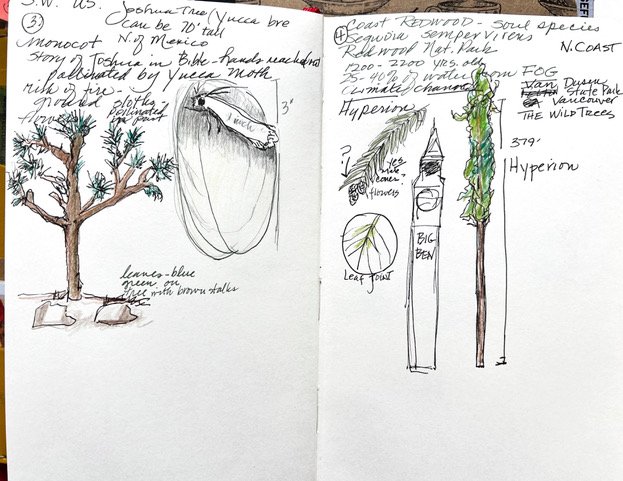
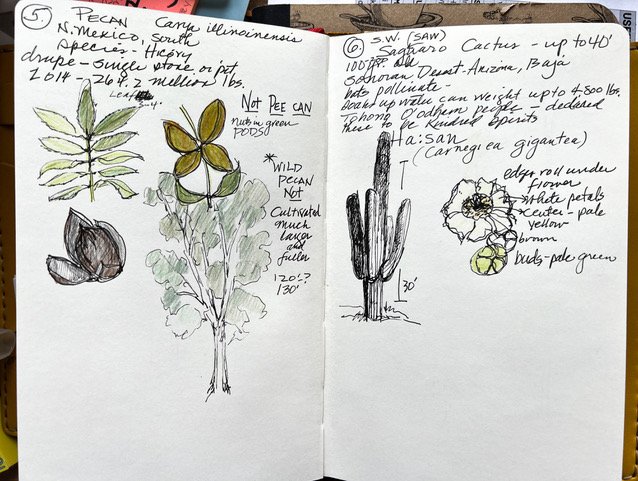
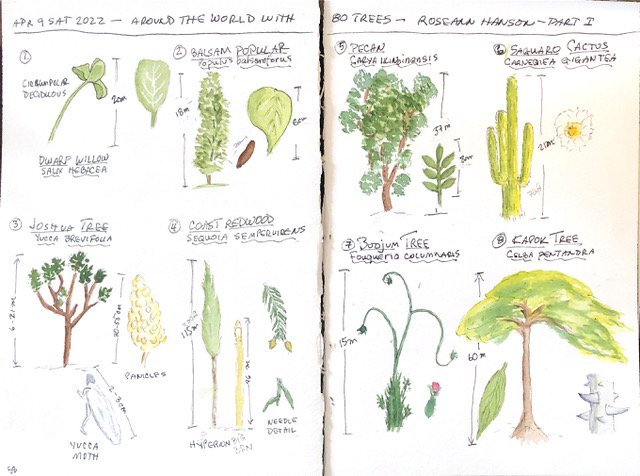

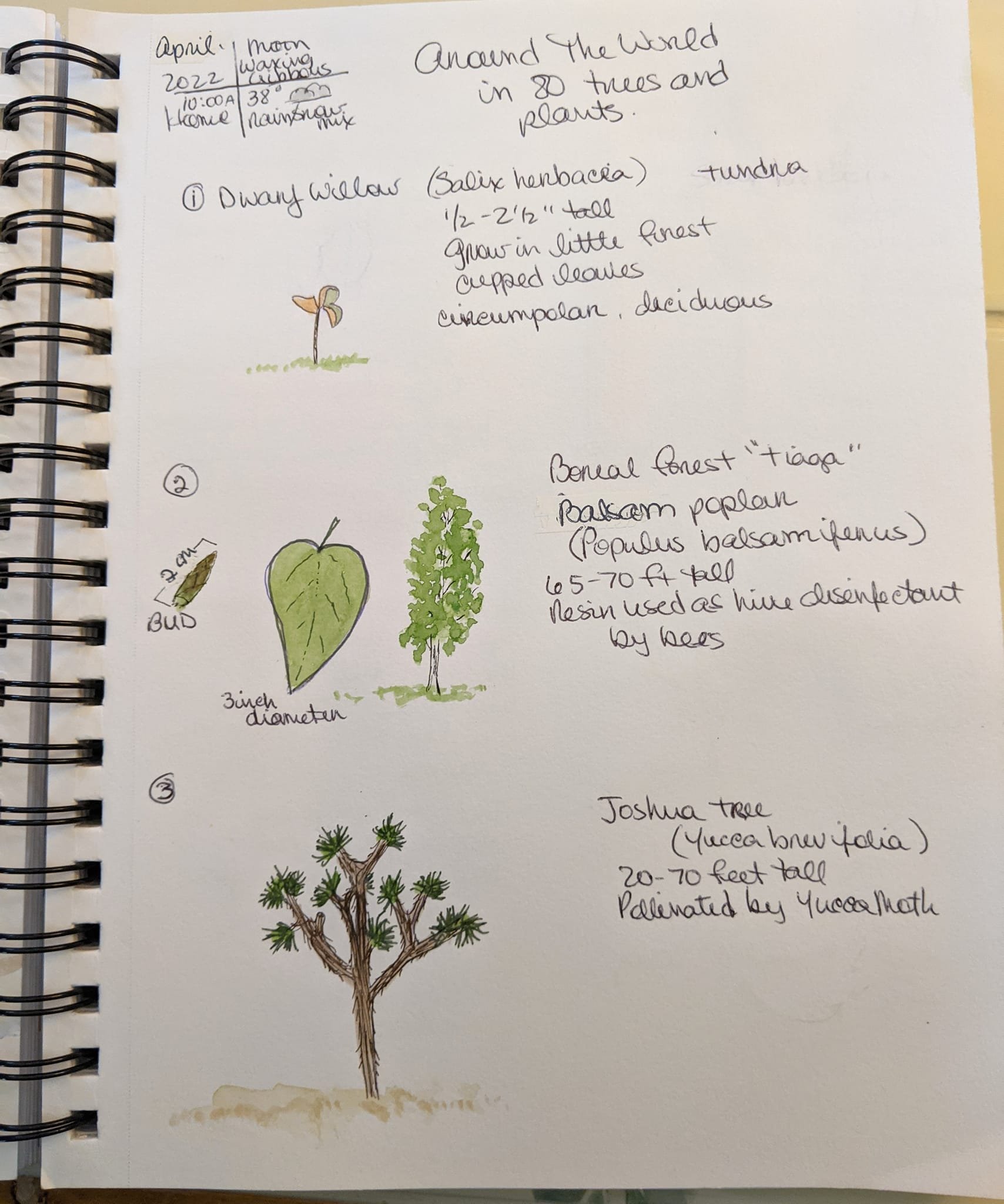
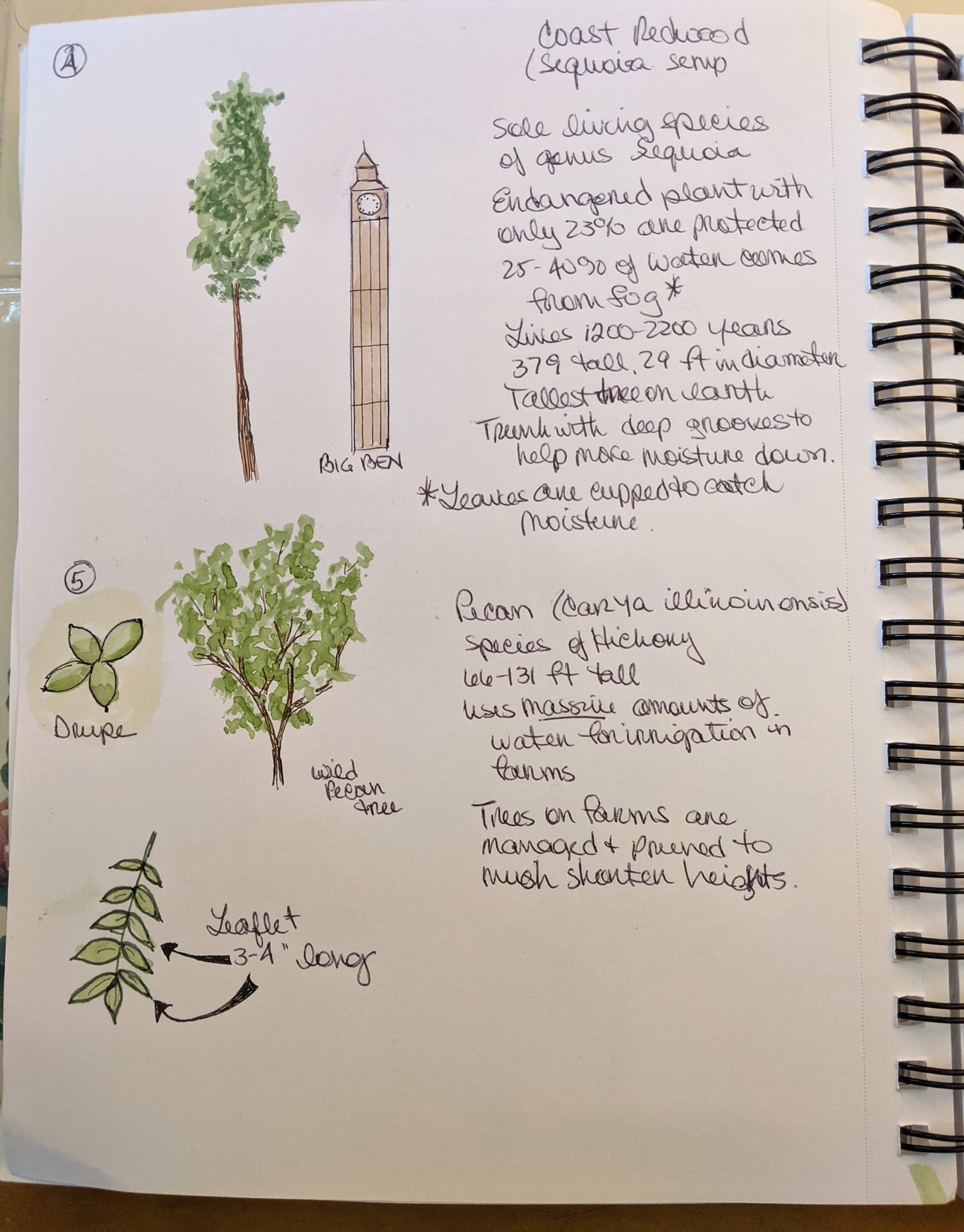
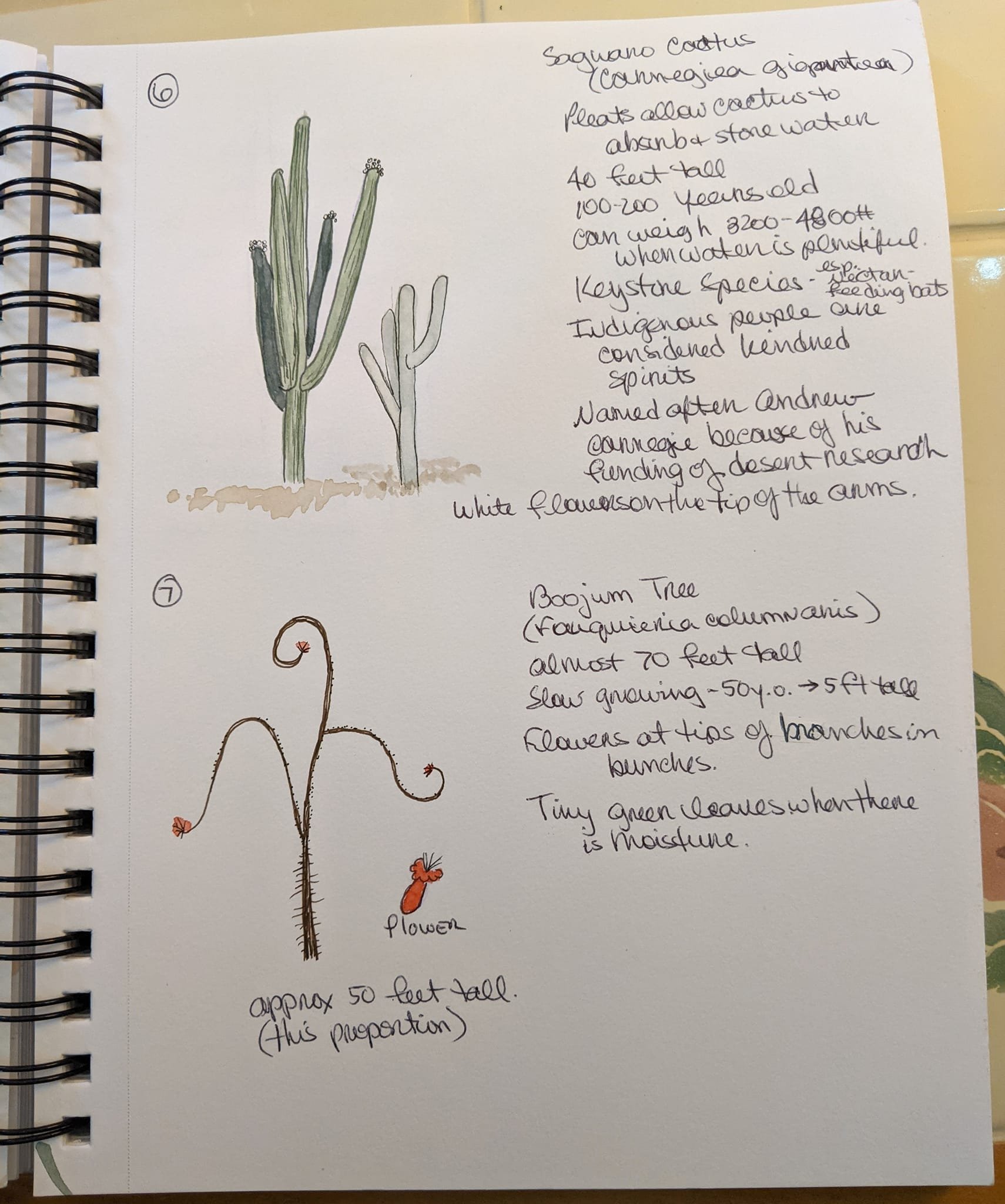
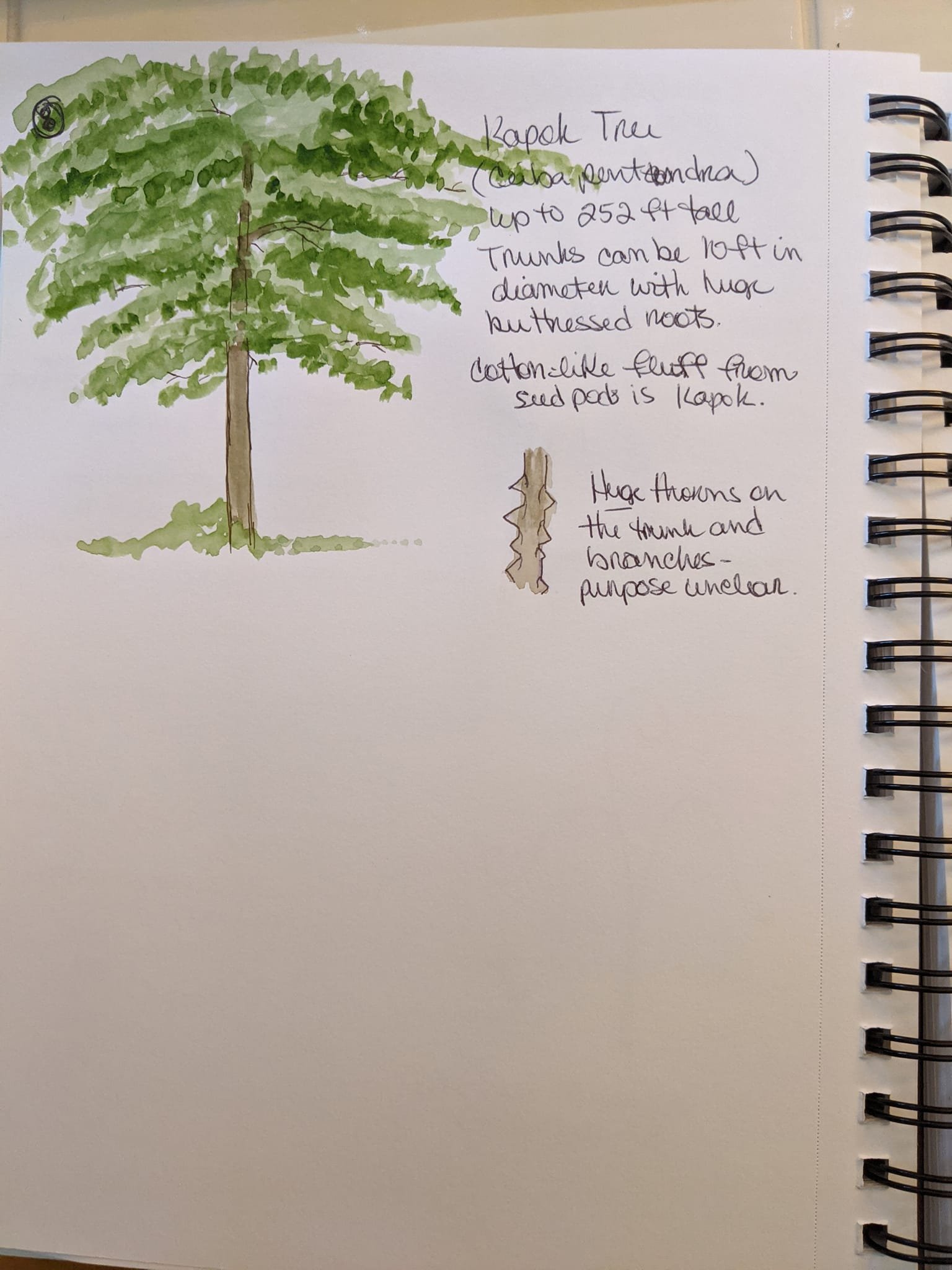
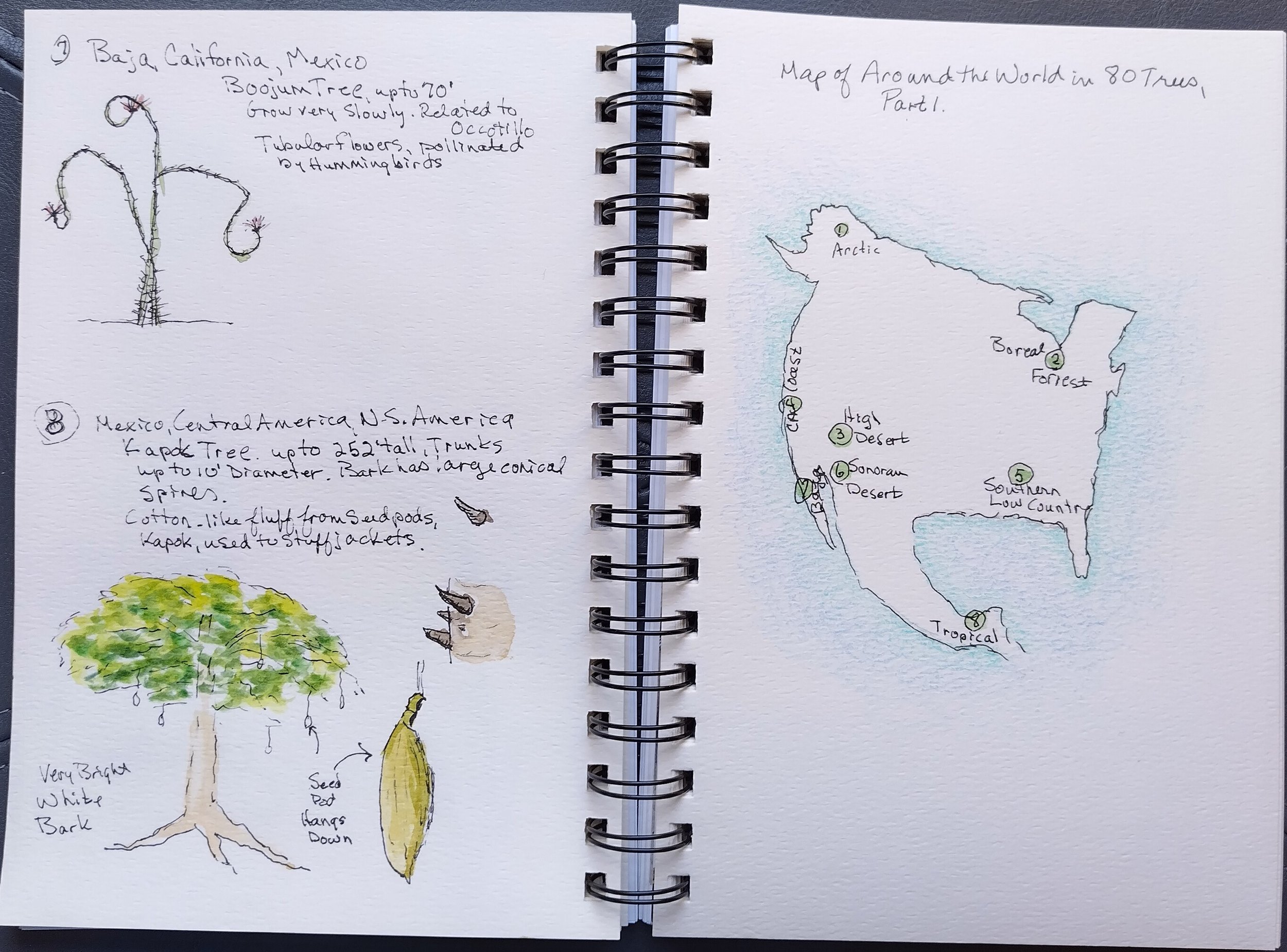
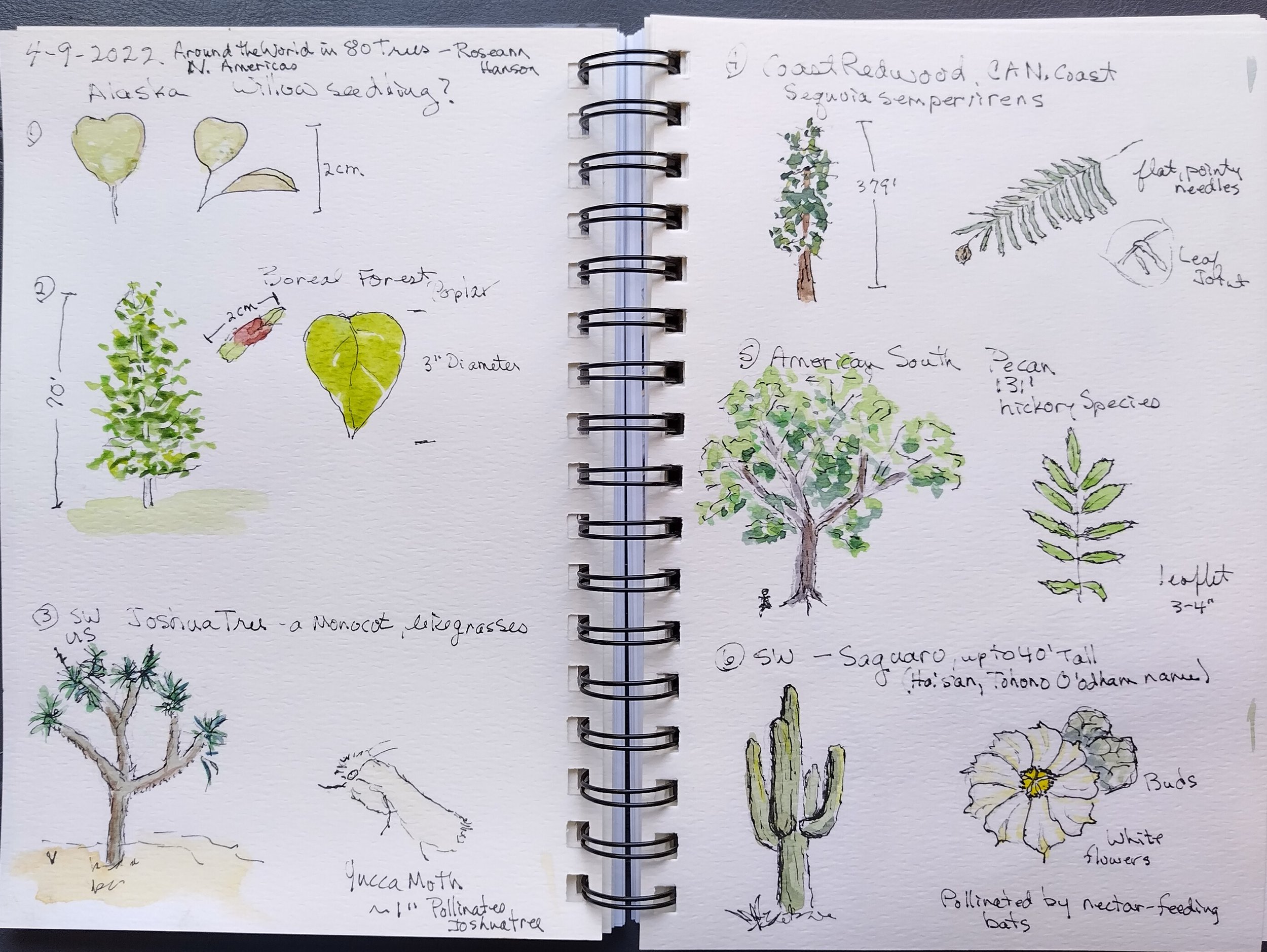
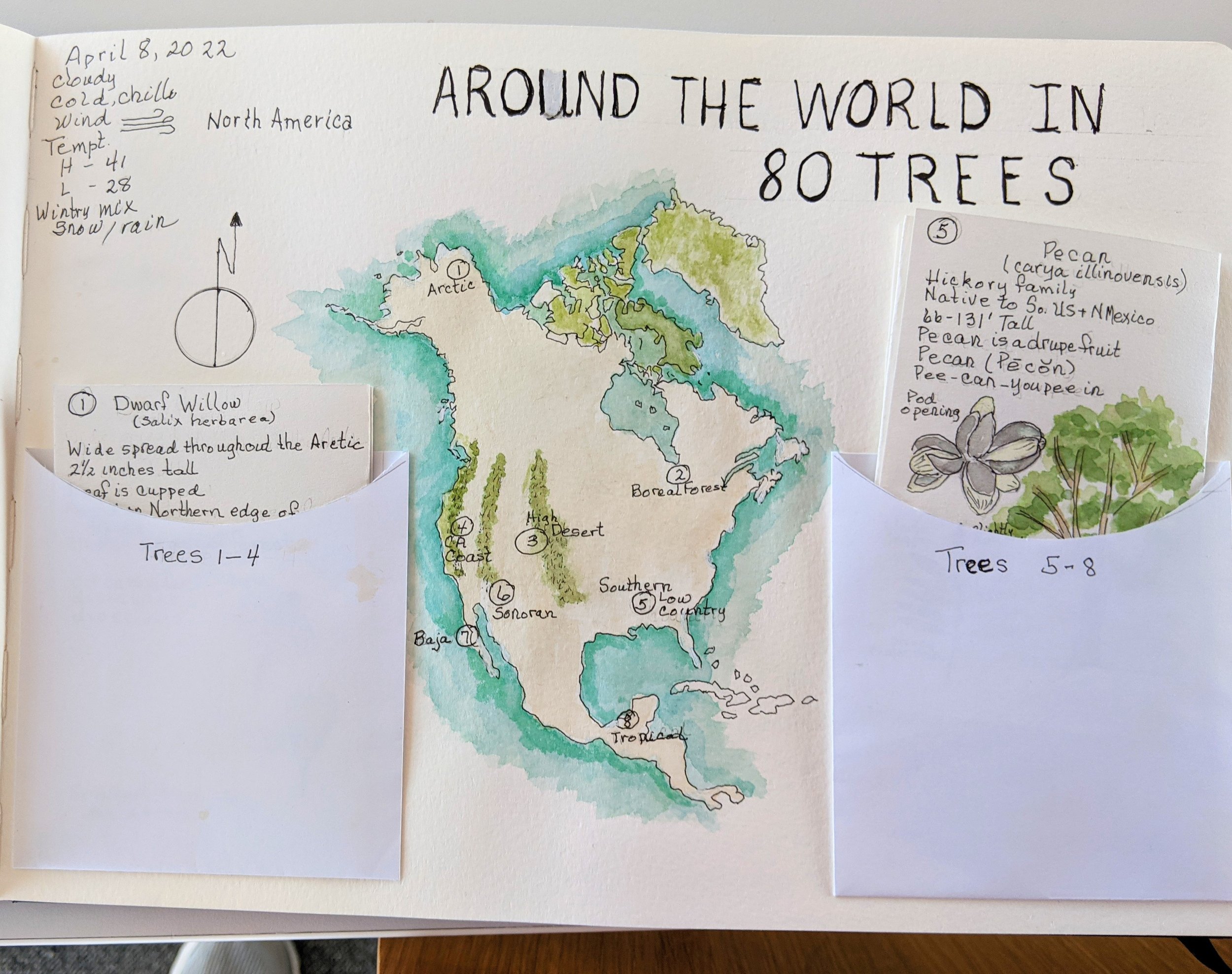
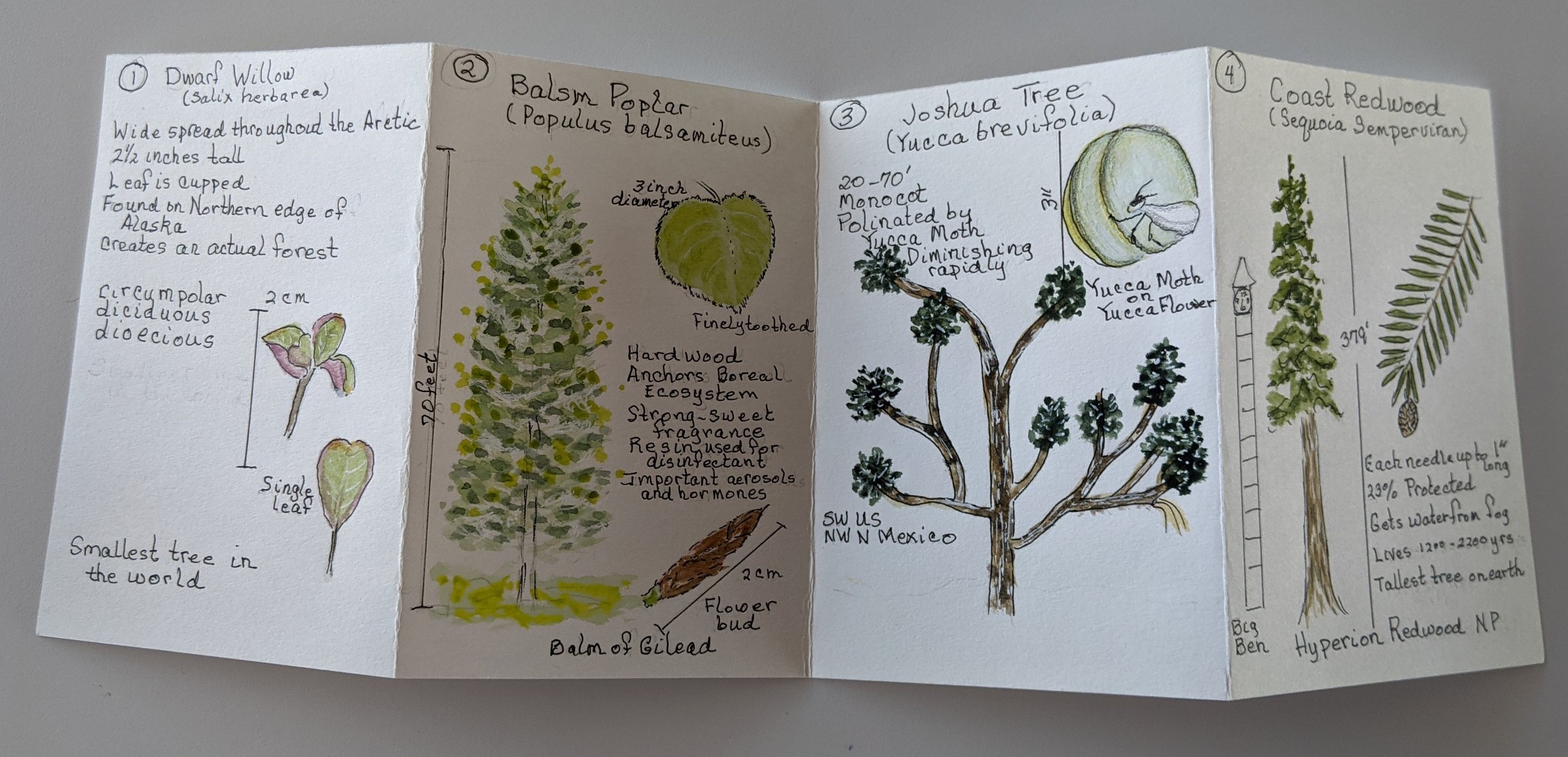
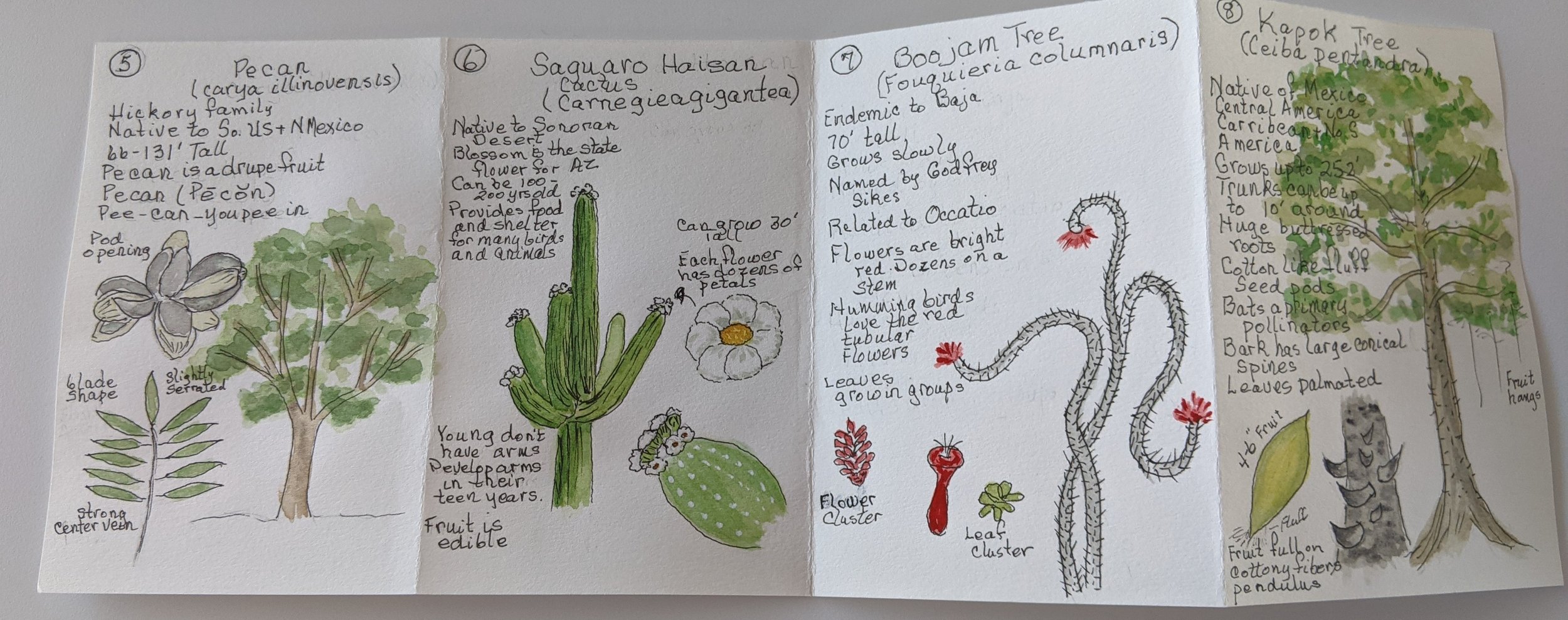
Virtual Field Trip to Arctic Alaska
I recently returned from a two-week exploration of the Alaskan high and middle Arctic—and fell in love! I'd love to take you there, so jump aboard as we head back to Point Barrow and Uqtiagvik, and then journey up the "haul road" to Prudhoe Bay, enjoying the Brooks Range and looking for caribou and muskox. [You can view my journal pages from my journey by clicking the link above.]
Length: 2 hours
Resources from the Field Trip
To access the Virtual Field Trip online, my interactive journey with dozens of images and videos and maps: https://360exploring.s3.us-west-1.amazonaws.com/Arctic+Alaska/output/index.html
CHAT transcript — click > https://www.dropbox.com/s/epenu1vs7lxtkgl/Chat%20Transcript%20Virtual%20Field%20Trip%20Alaska.pdf?dl=0
Click image at ABOVE to initiate download of the workshop PDF with all the information. Or, use: https://www.dropbox.com/s/xhbhlextkbvnr4v/Alaska%20Virtual%20Field%20Trip%2010-2021.pdf?dl=0
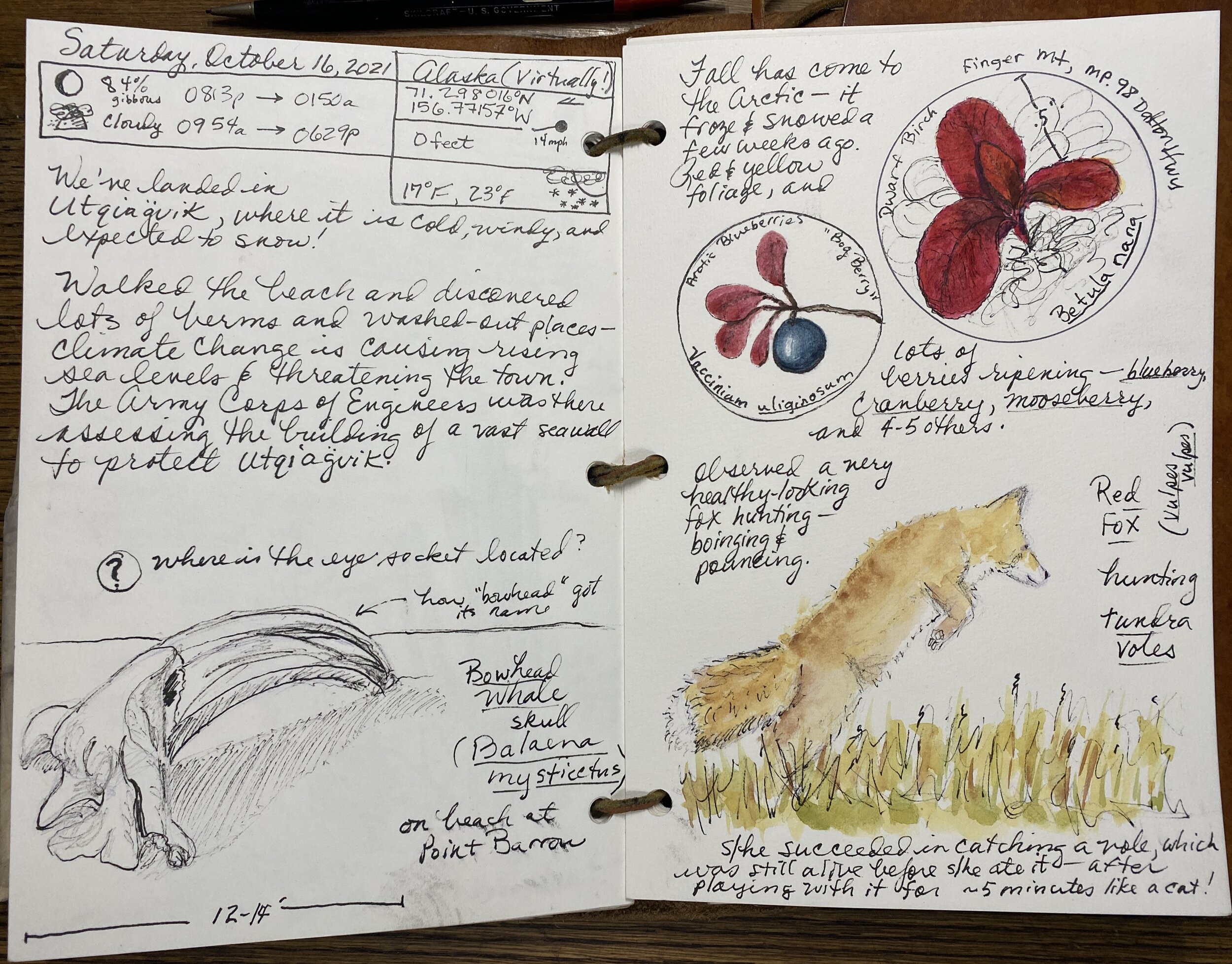
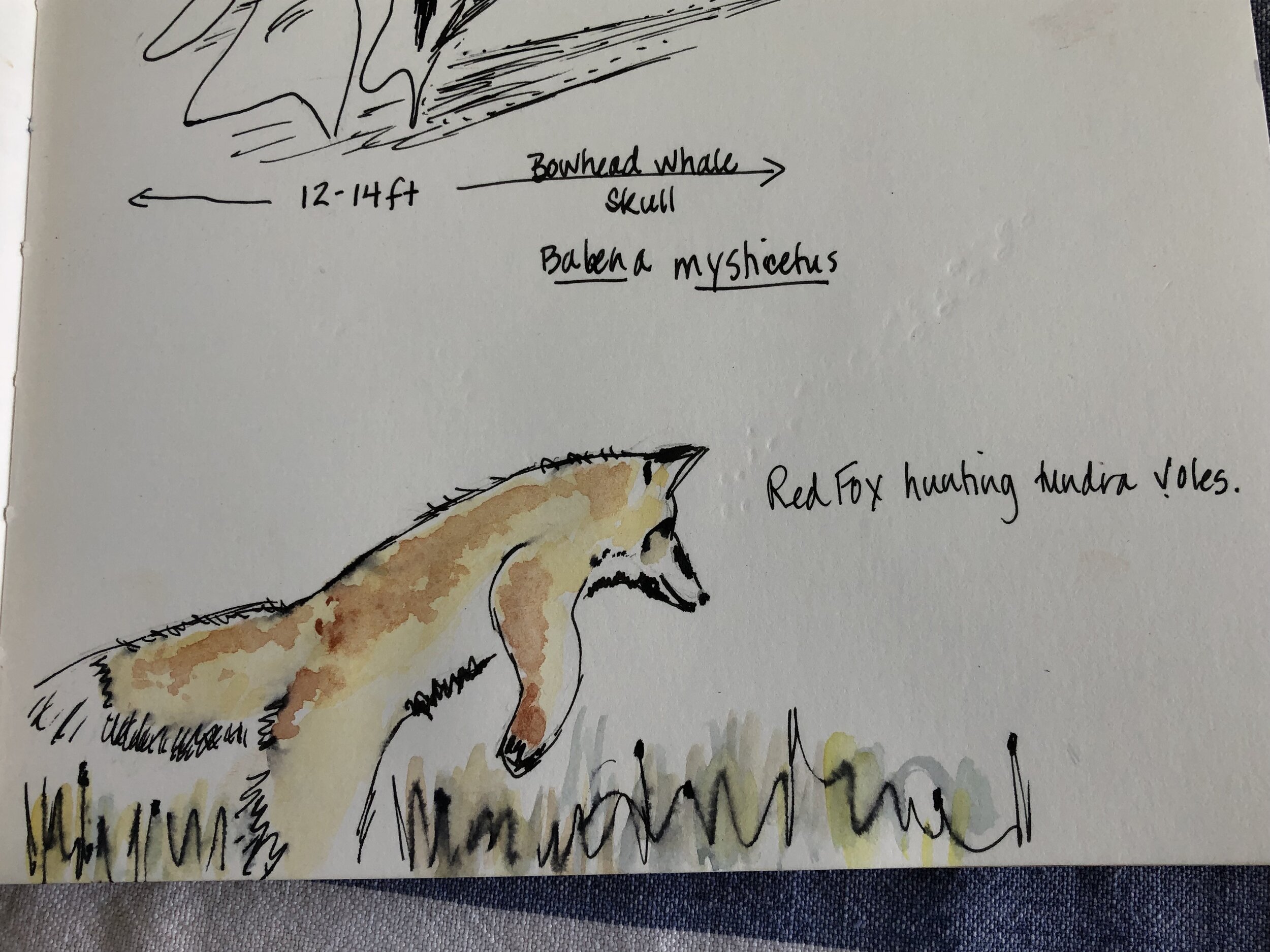
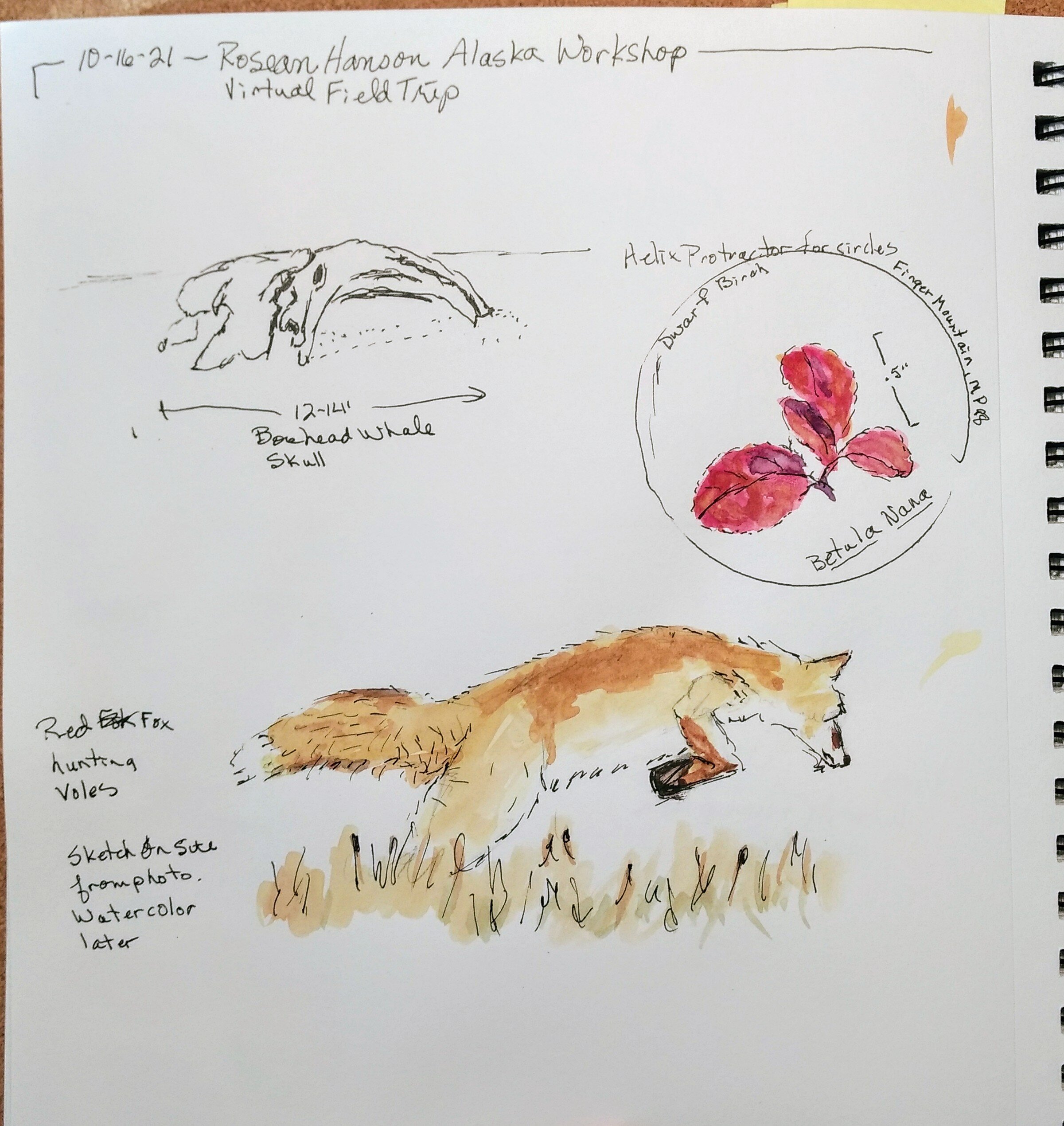

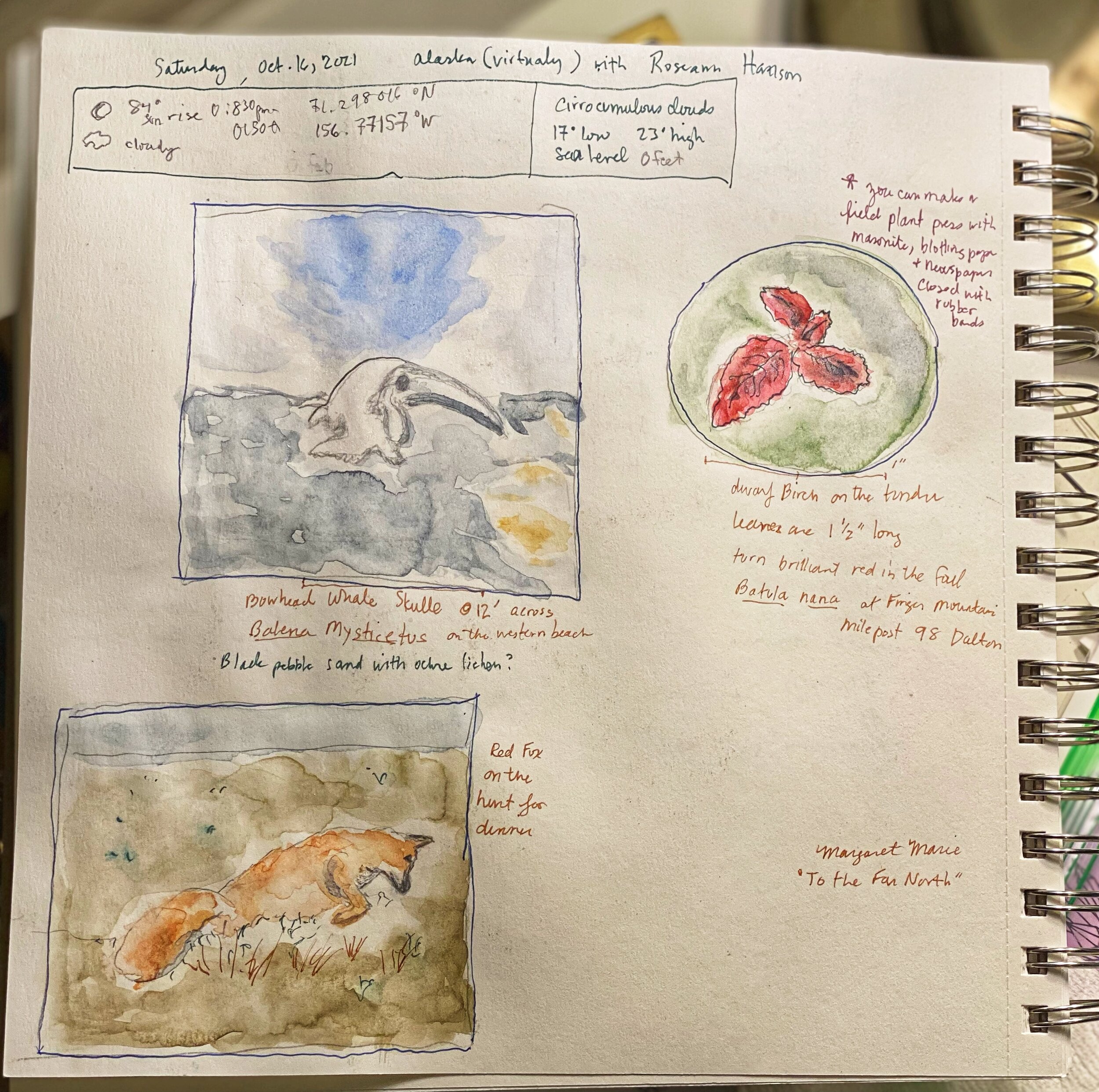
Field Arts Workshop: Elegant Ink for Field Notebooks
Join me for a celebration of the art of elegant ink in our sketchbooks. While I do love color in my journal, I also love the beauty of well-wrought pen sketches.
We’ll cover types of pens and inks (from ballpoint to fountain pens, including the pluses and minuses of the types); practice mark-making and values; and work on a couple of different types of sketches using one image to create each, so we can see how different styles of linework each produce a different “feel” on your pages.
Length: 2 hours
Images at right: Creating various “palettes” for your marks is a great exercise and very useful to keep tucked in a pocket of your journal for reference. The different types of stroke, texture, and tone are like words in a language or paint colors in a palette: you choose each for a different effect, feel, tone, or emphasis.

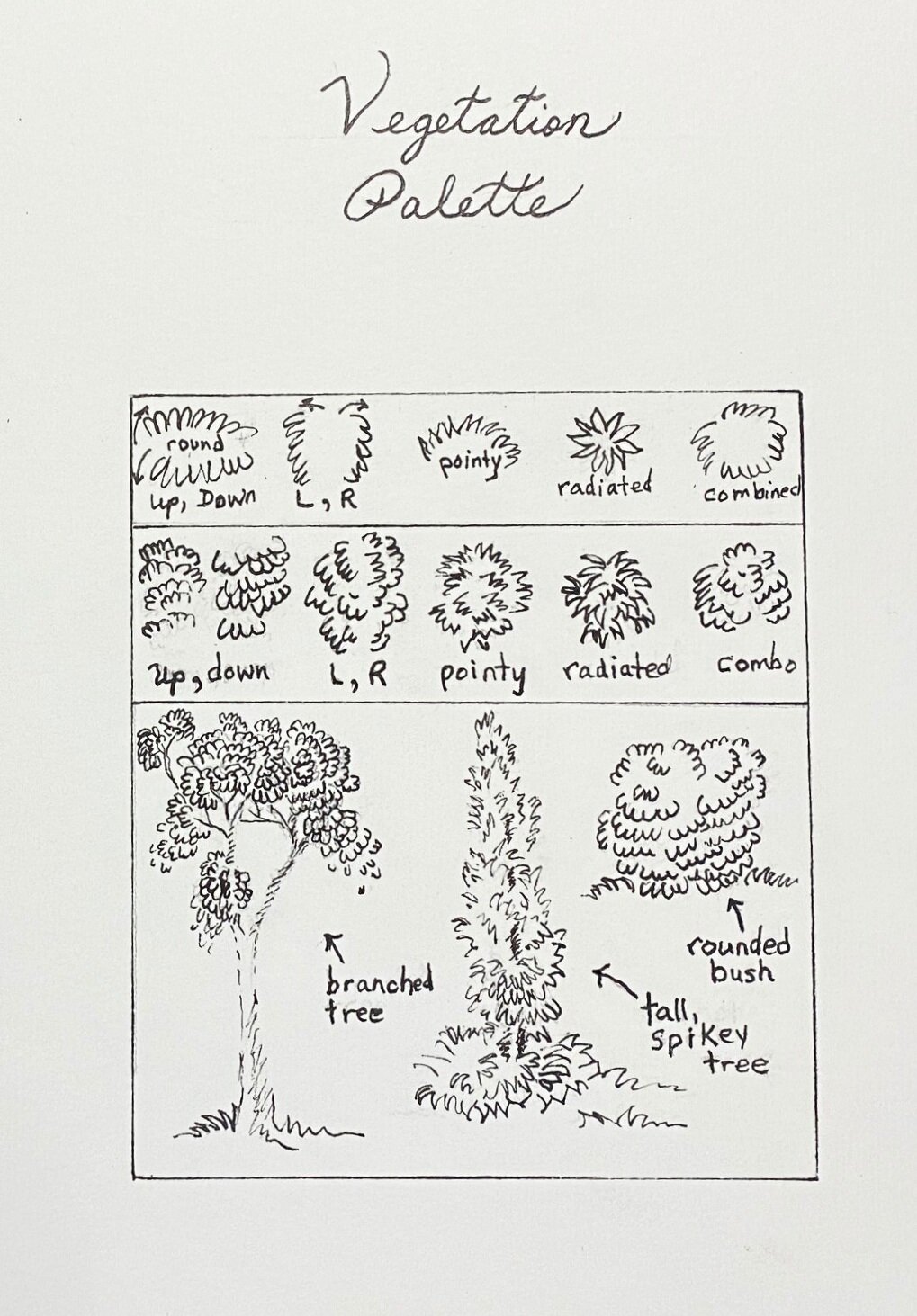
Resources from the Workshop
CHAT transcript — click > HERE <
Click image BELOW to initiate download for the workshop PDF with all the information, sample images, and links. Or, use: https://www.dropbox.com/sh/rvlzr0a9hezdgjr/AACw6pH9jwhj6sQ-rvmM_GGwa?dl=0
Bonus! I did a short video (no sound) of how to clean and refill a fountain pen:
DEMOS FROM THE WORKSHOP
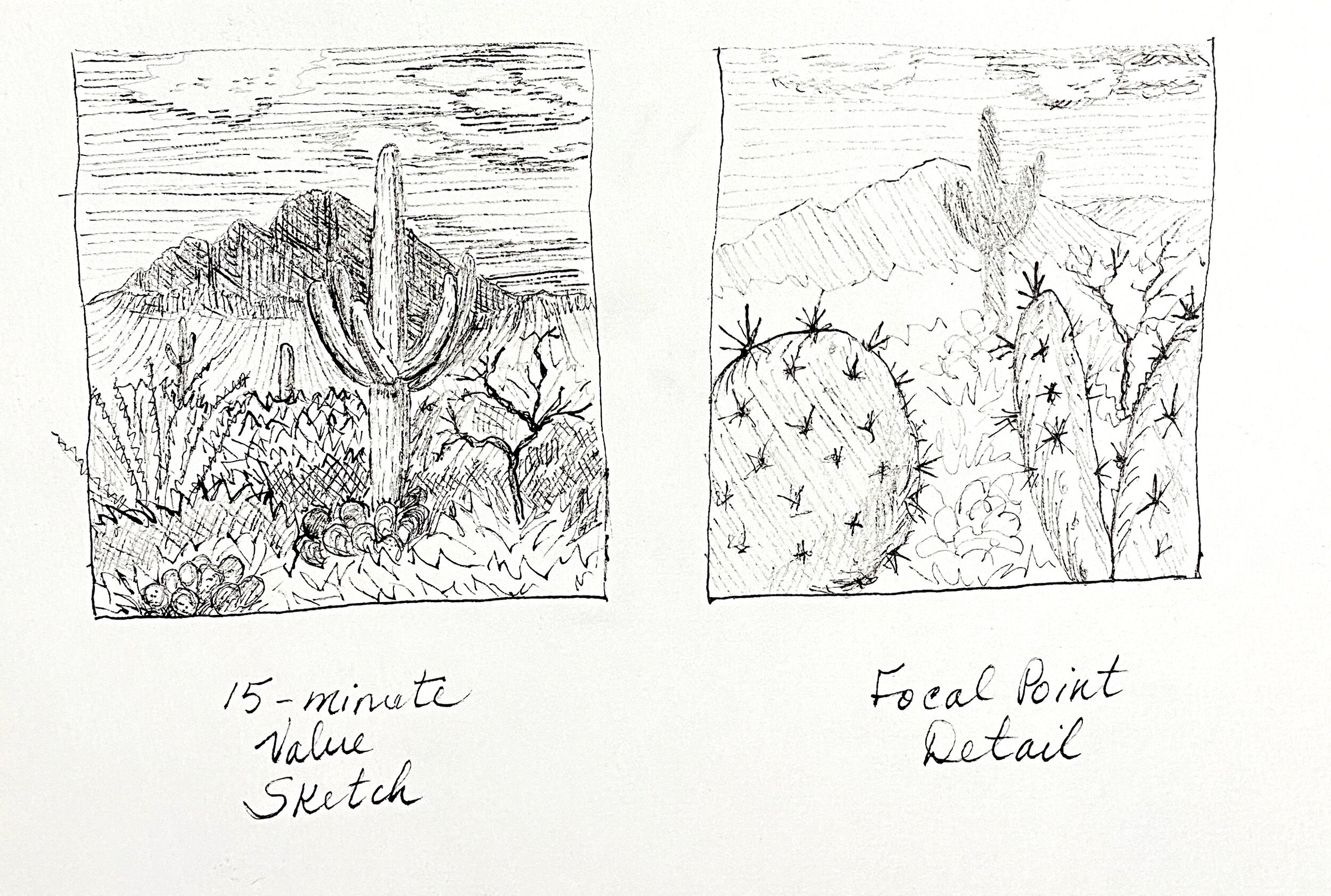
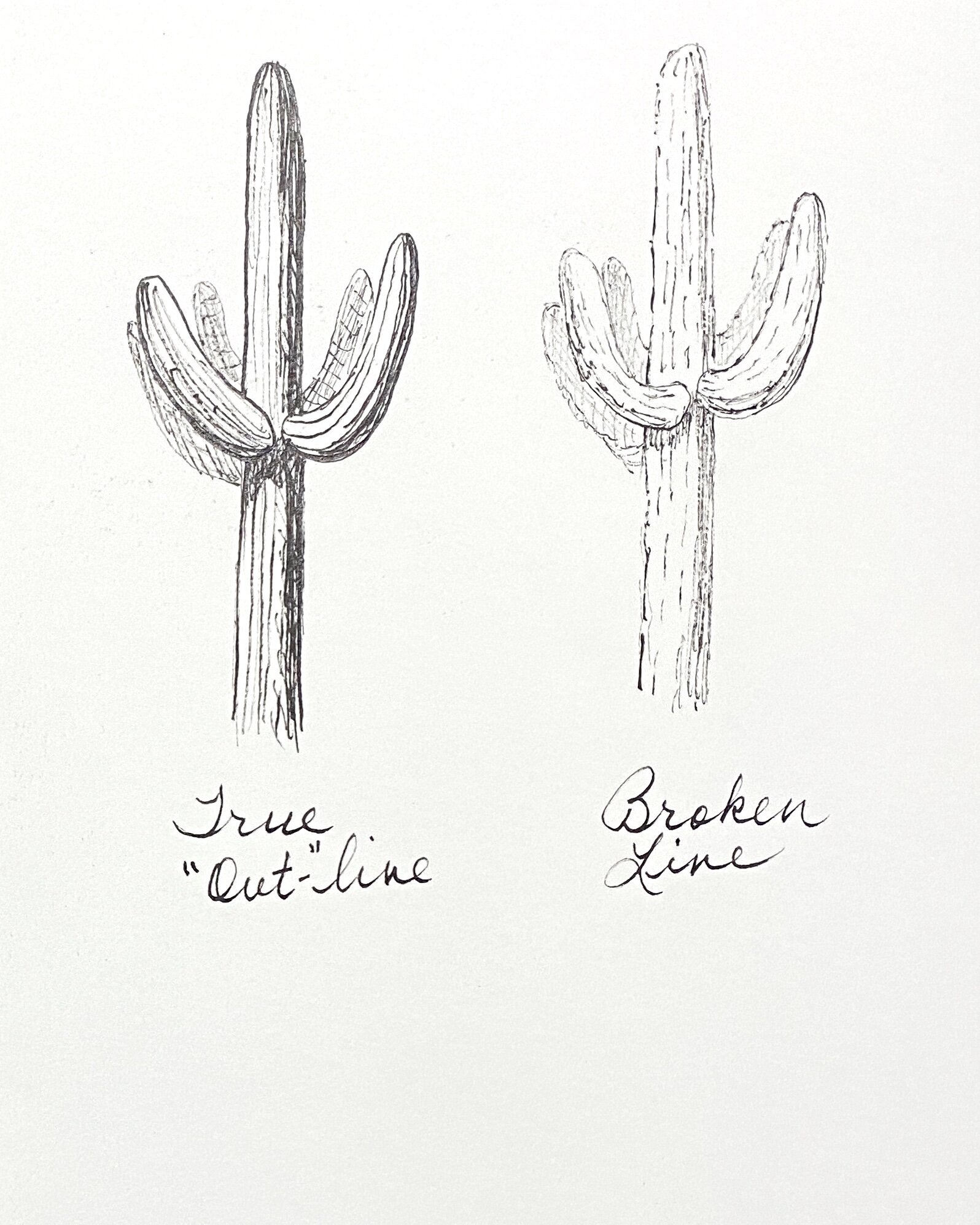

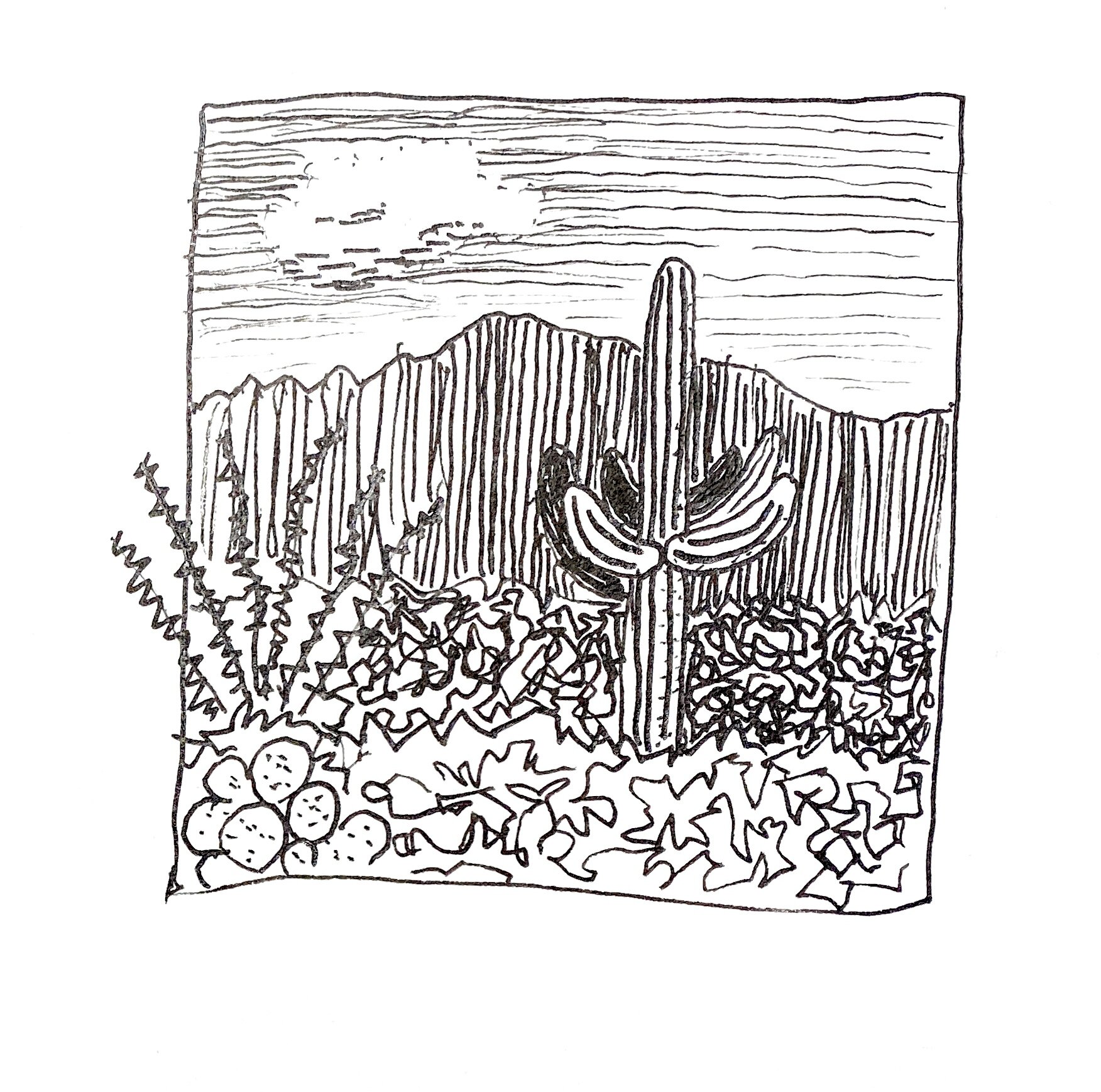
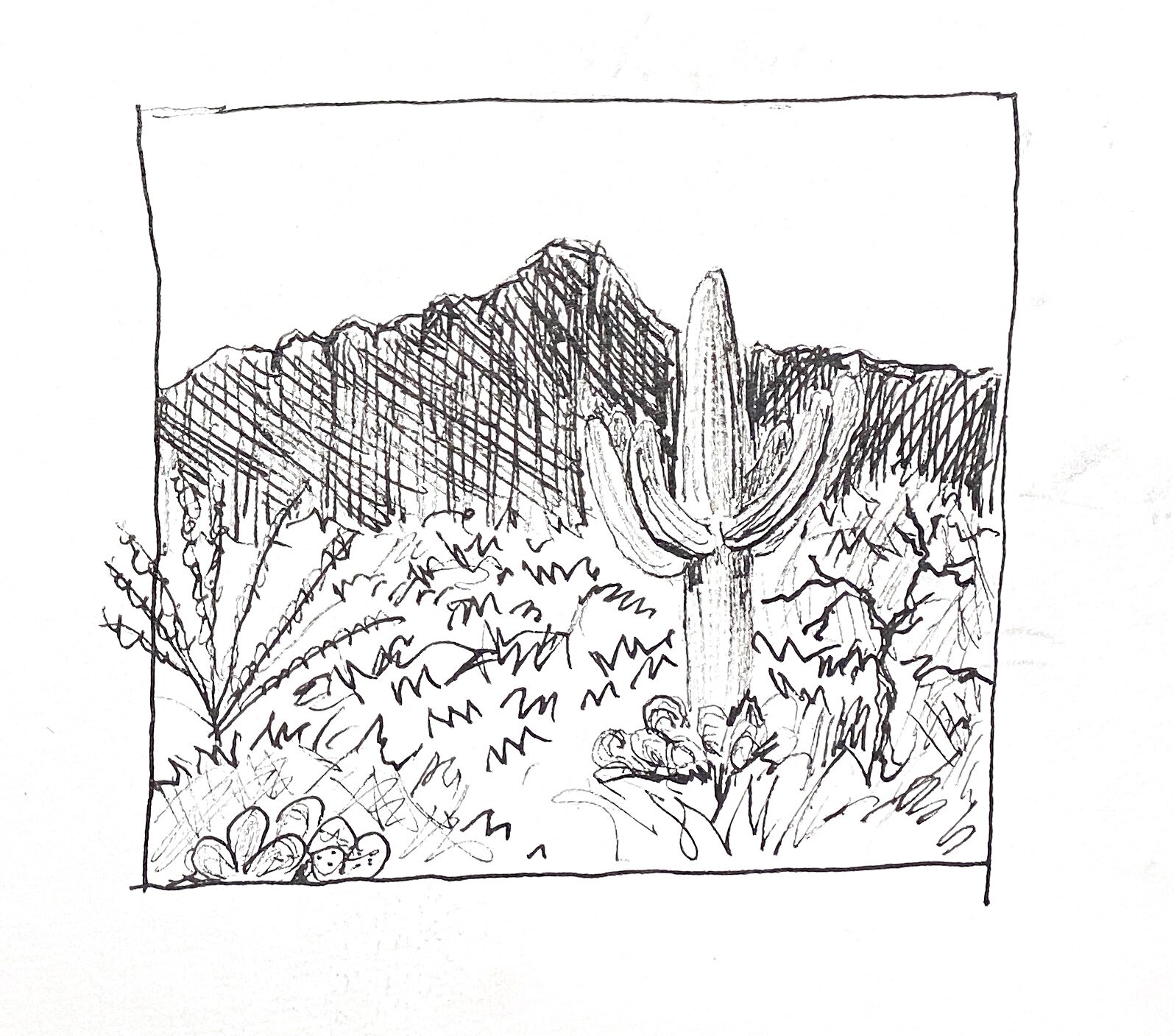
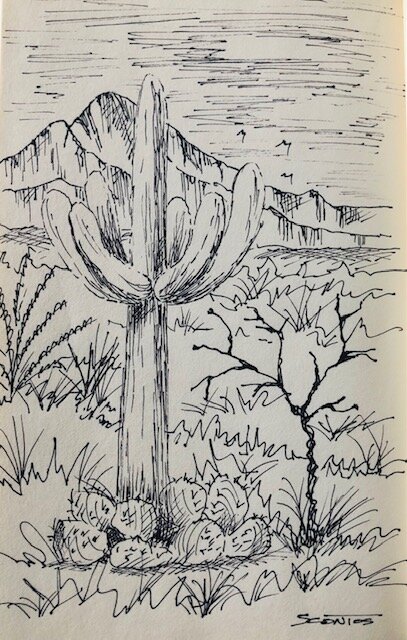
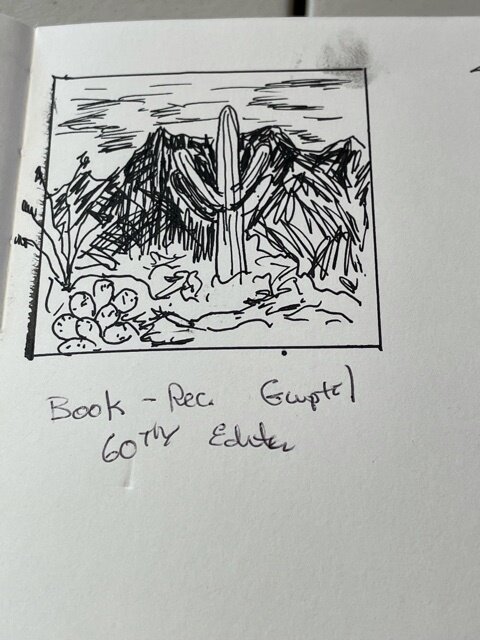

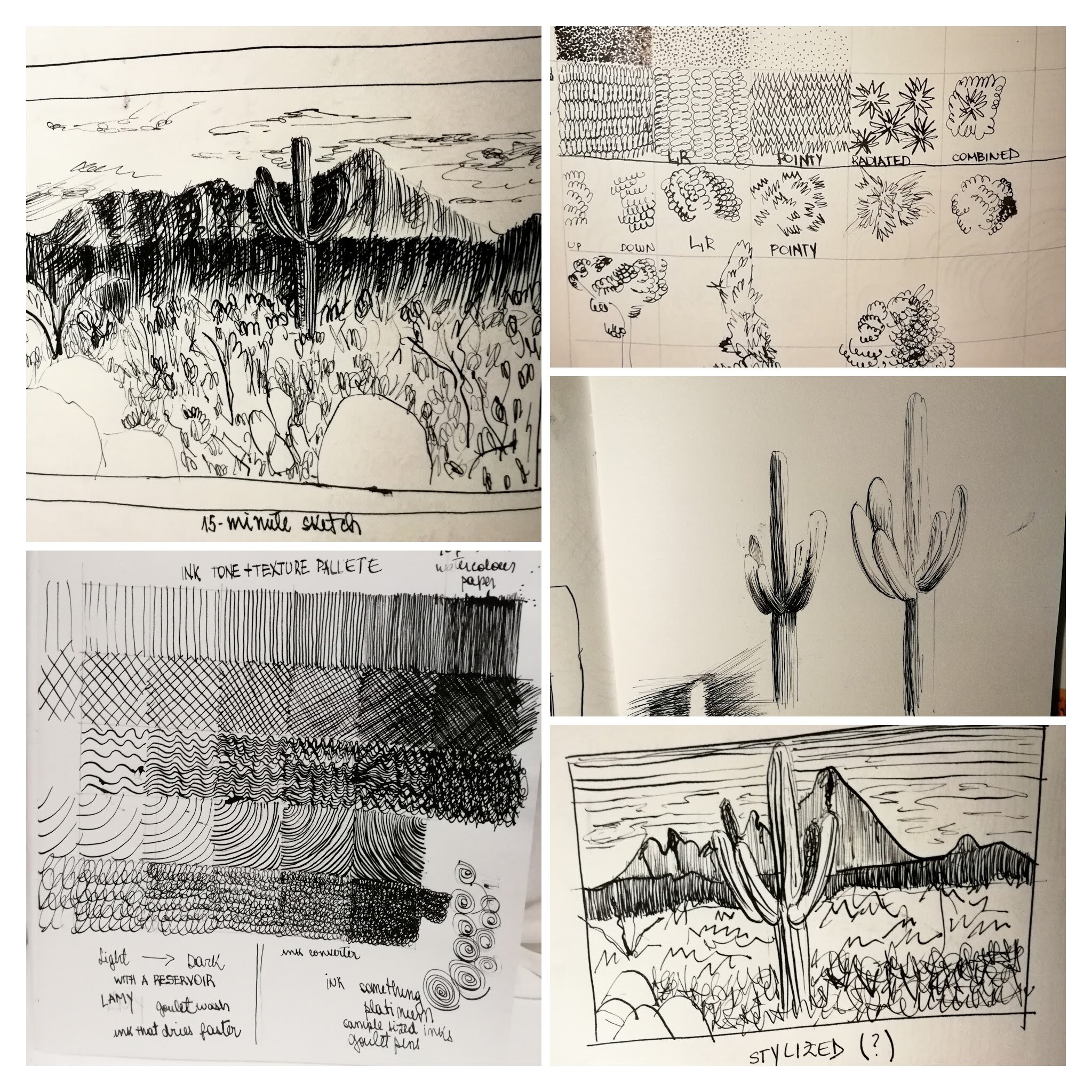

Virtual Field Trip: Winter Wonderlands
Join me on a virtual field trip sketching winter wonderlands around the world! Experiment with different ways to represent snow and ice . . . from the comfort of your warm studio!
We’ll learn about wavelengths and why snow is white and glaciers are blue; explore using blue for shadows in show; practice winter “colorways;” how to represent animal tracks; and sketch some icicles.
Sketch along or just observe, I’ll narrate as I go to demonstrate why I choose to focus on what subjects and how to quickly capture them in your field notebooks and nature journals.
If you’re shy, don’t worry—we don’t require anyone to share their work and you can remain completely anonymous and worry-free!
Length: 2 hours
Resources from the Workshop
WHAT COLORS?
French Ultramarine Blue - granulating, makes lovely grays by mixing with Burnt Sienna. Also makes beautiful snow-shadow and sky colors.
In my mini triad palette Daniel Smith (CMY = cyan, magenta, yellow) plus two extras —
Manganese Blue Hue
Quinacridone Rose
Aureolin Yellow (Cobalt Yellow PY40)
Burnt Sienna
Indanthrone Blue
Other useful colors:
Readymade grays - Payne’s Gray or Jane’s Gray (which is French Ultramarine and Burnt Sienna already mixed).
Fun - Shadow Violet and Moonglow, are more purpley grays.
PRACTICING WINTER COLORWAYS WEBLINKS
Study in Blue, by Scott Kranz Photography:
https://www.scott-kranz.com/landscape-portfolio
Lake Solitude, Grand Tetons, Wyoming:
Kenai Fjords, Alaska:
CANELO HILLS VIRTUAL FIELD TRIP IN 360-DEGREE VIEW:
https://360exploring.s3-us-west-1.amazonaws.com/WinterWonderland/output/index.html
METADATA AND NATURE DATA for CANELO HILLS, SOUTHEASTERN ARIZONA, USA:
31.557 degrees N
110.55 degrees W
5,182 feet
Sunrise 7:12AM / Sunset 6:02PM
Moonrise 2:42AM / Moonset 1:12PM
High 65 / Low 37
Clouds: Altocumulus “mackerel” sky
Original pages by Roseann, completed onsite during the real field trip in January.
Virtual Field Trip Pages by Roseann
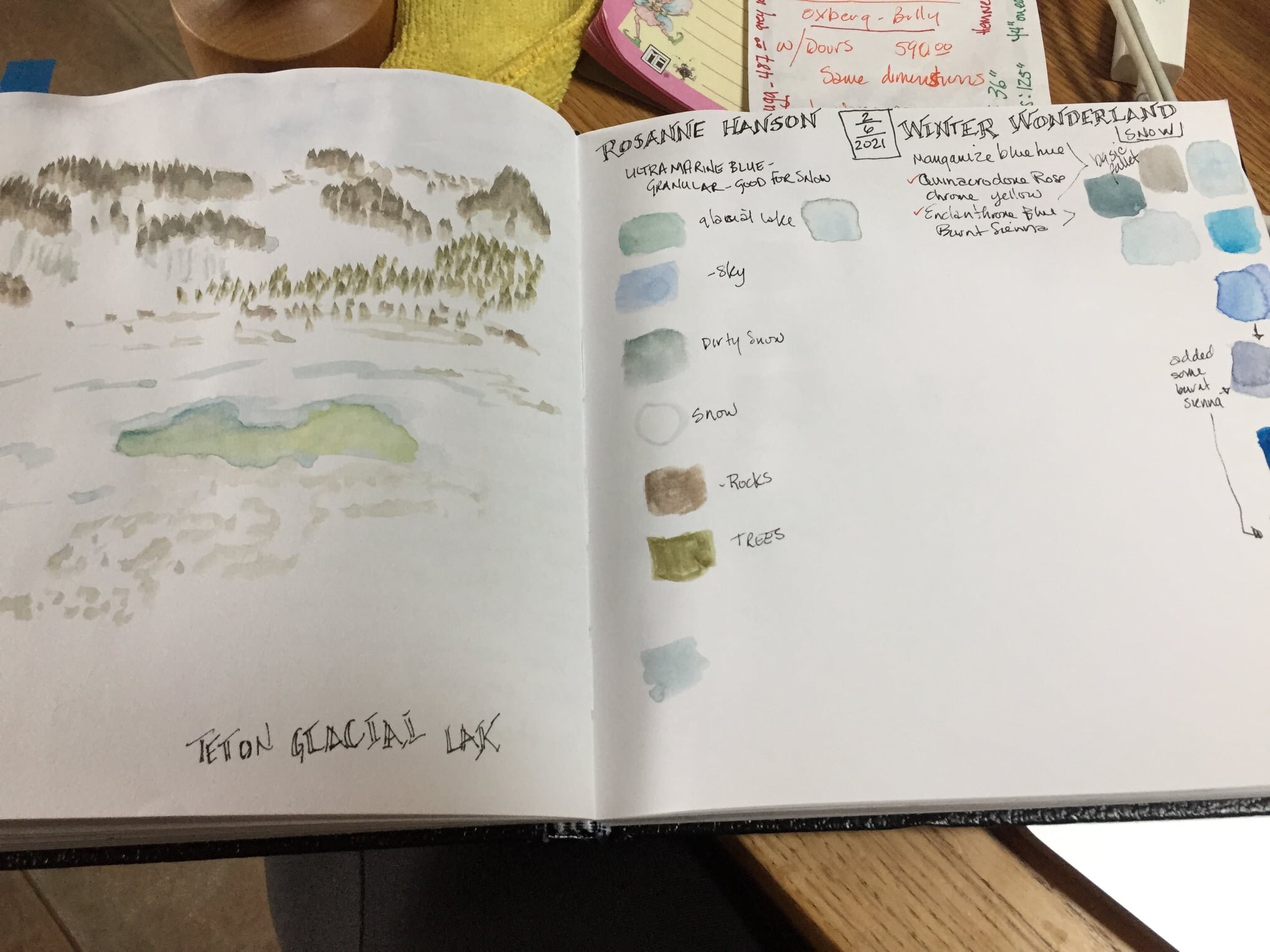
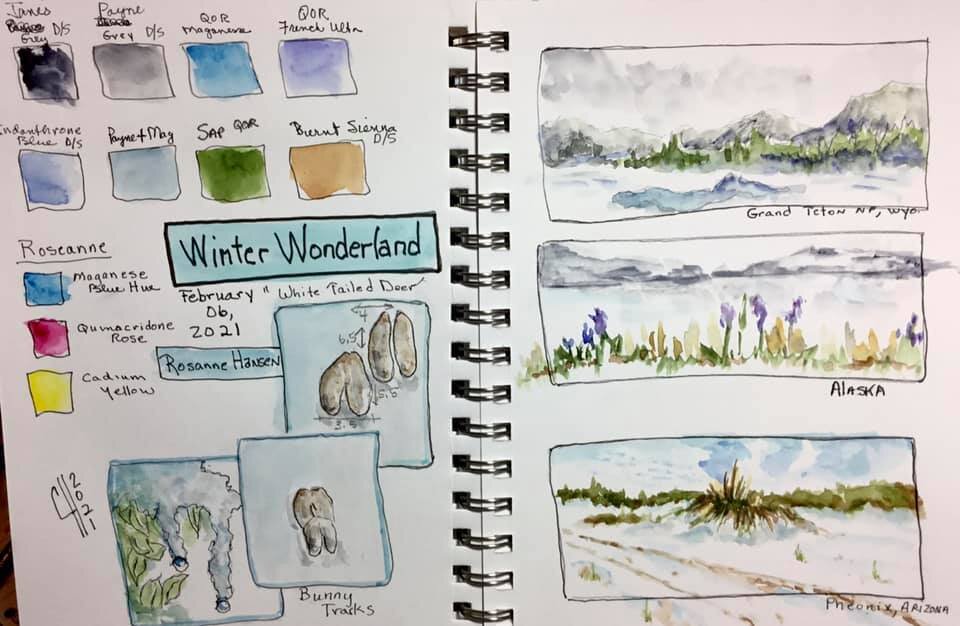
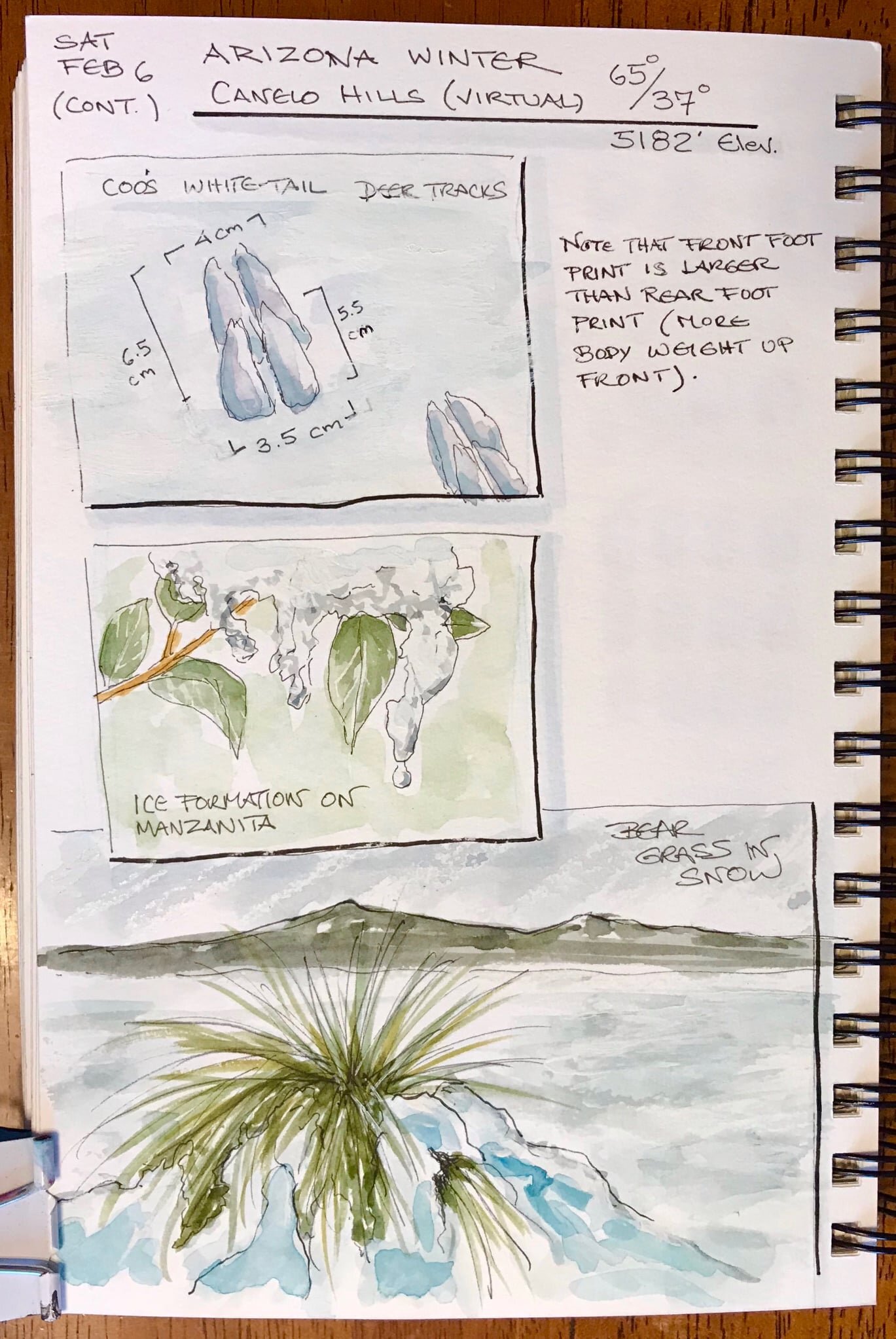
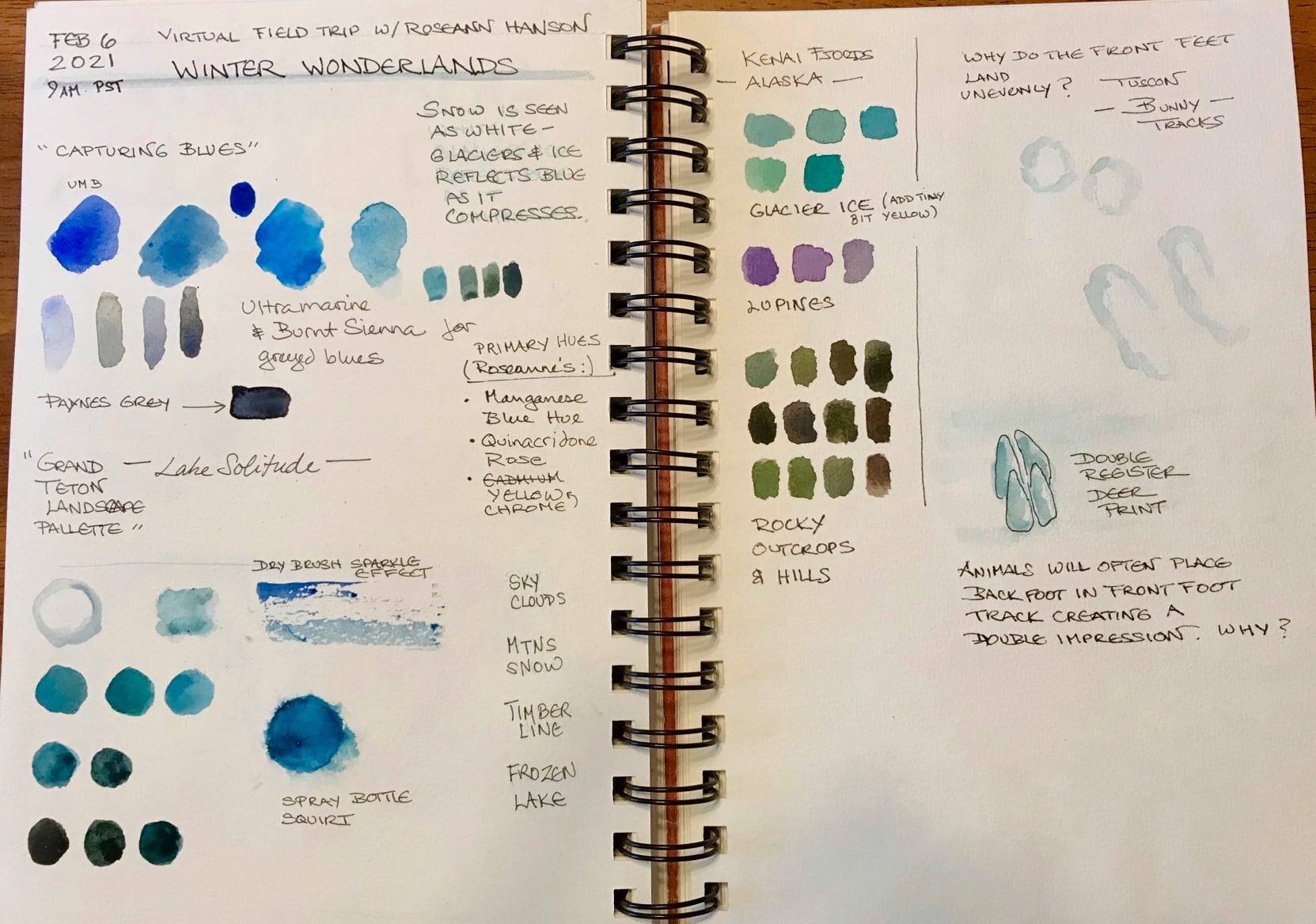

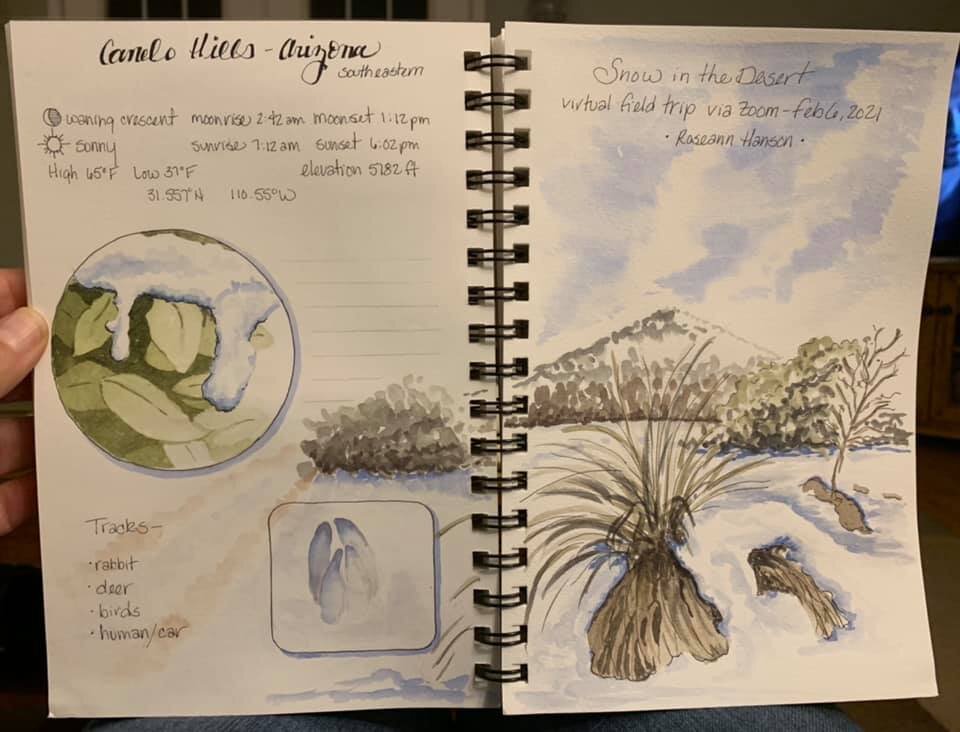
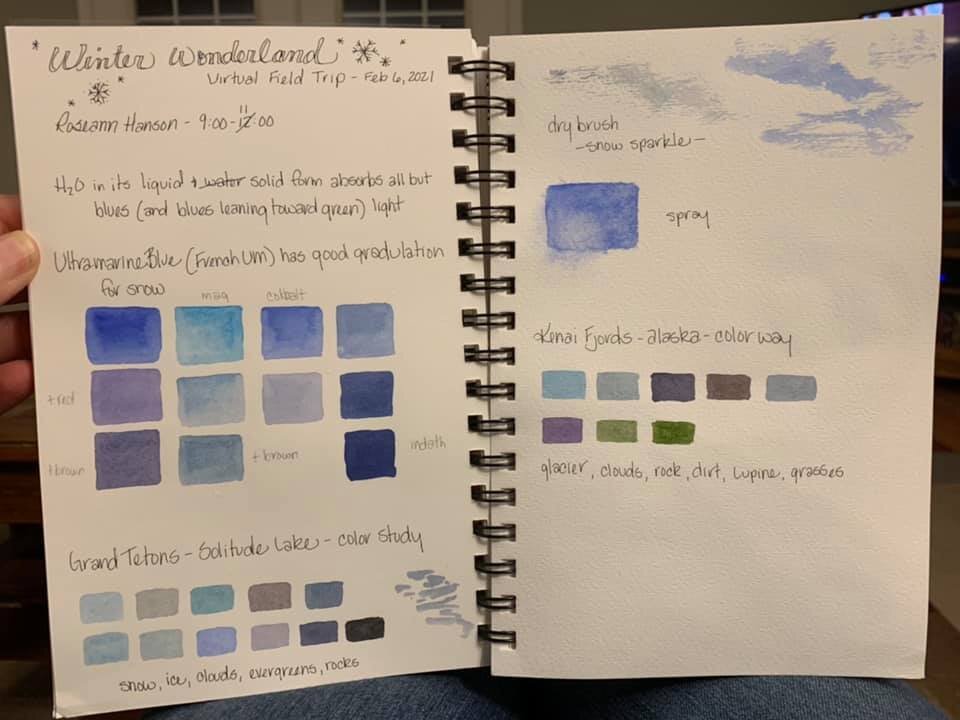
Support free tutorials! Click to contribute to the Tip Jar!
Using Grids: 3D cube landscapes and more
Join me for a free online workshop on how to draw “3-D” landscape cubes — in which you envision taking a giant cutter and pulling a cube out of a landscape, showing the sliced edges and details such as soil and creeks and roots (see here and here for examples). John Muir Laws details them in his wonderful book The Laws Guide to Nature Drawing and Journaling.
These are not easy to do— I struggled with these complex drawings “live” in the field. Where to place the cube, how to envision placing the elements correctly. I always drew mine from photos, then actually printed them and sketched the cube over the photo, or used Photoshop to put a cube over the digital photo.
But with a fun new tool ( the new clear Perspex Palette-Easel ) I will show you how to easily capture a very fun view of a landscape. Make your own (I’ll include instructions), or order one from my shop ($13 with a dry-erase marker or $12 without).
Length: 2 hours
Resources from the Workshop
IMAGE FOR PRACTICE DRAWING GRID LANDSCAPITO
IMAGE FOR PRACTICE-DRAWING CUBE LANDSCAPE
METADATA AND NATURE DATA for ROMERO POOLS, SANTA CATALINA MOUNTAINS, TUCSON, ARIZONA, USA:
32.414359 N, -110.872213 W
3713 feet elevation
Sunrise 0722 am
Sunset 0529 pm
Moonrise 0136 pm
Moonset 0258 am
Moonphase 75% illumination / waxing
High / Low temperatures - High 63/ Low 45 (degrees F)
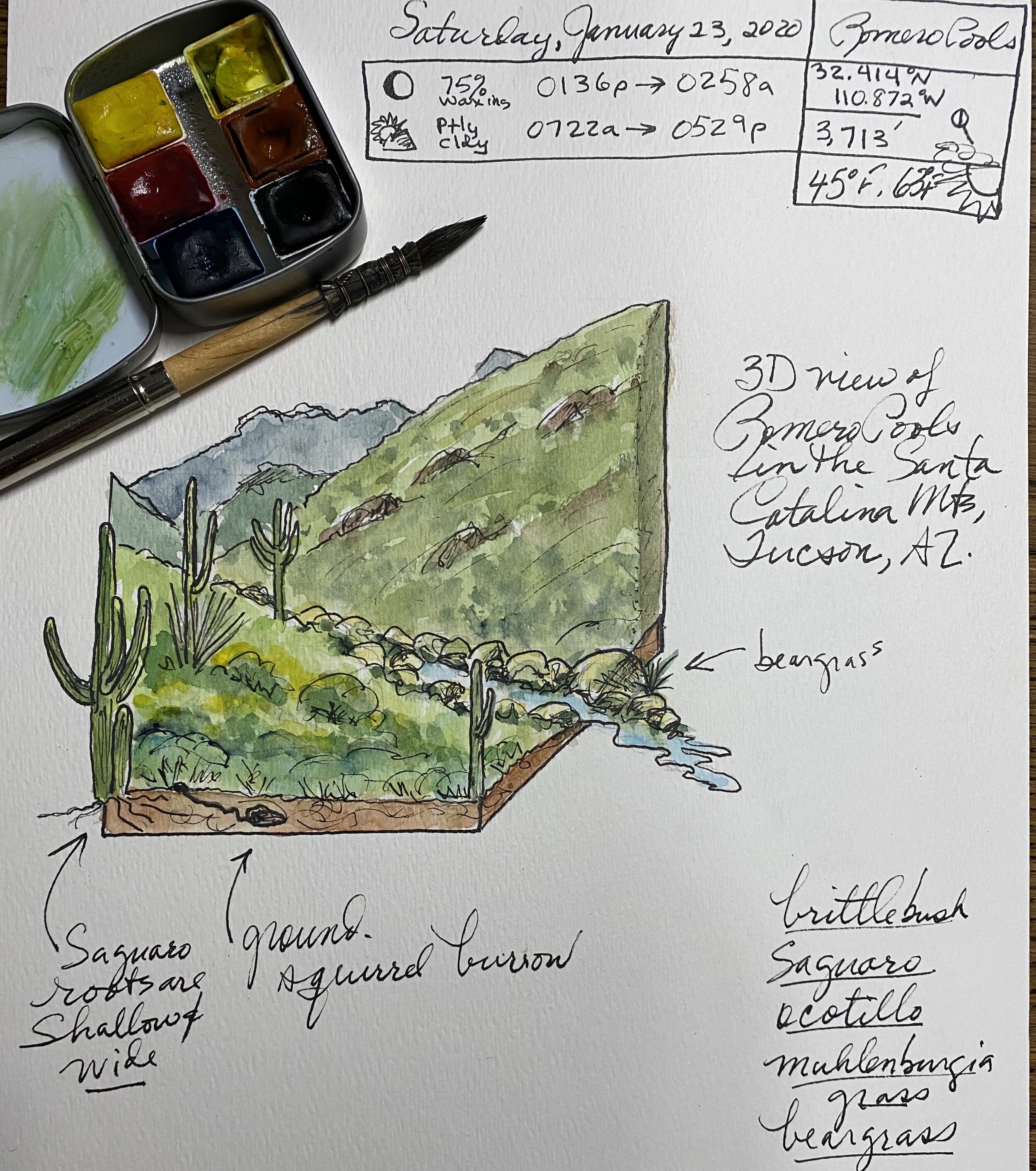
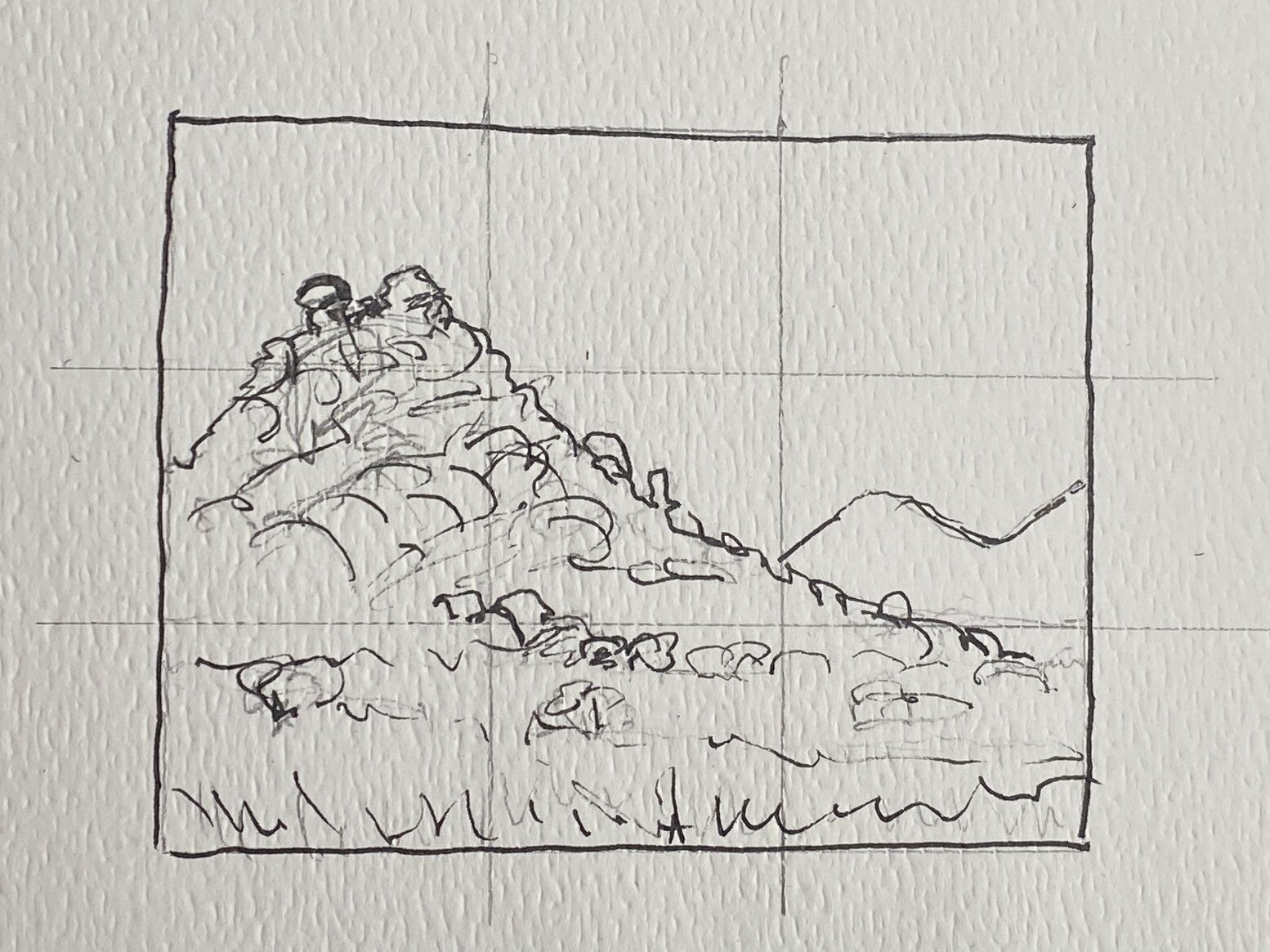
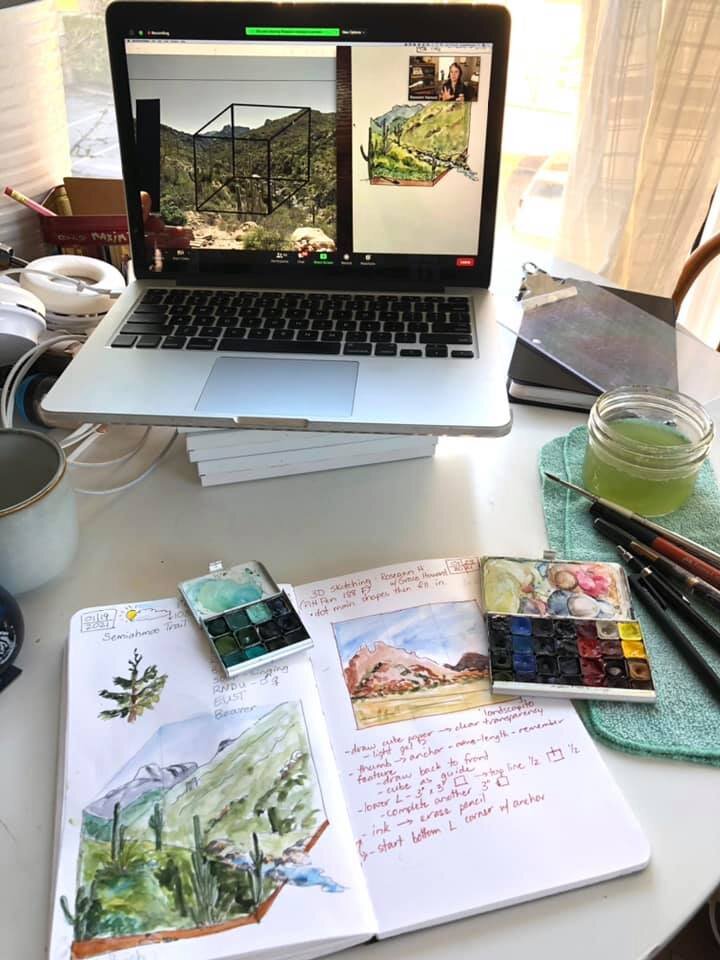

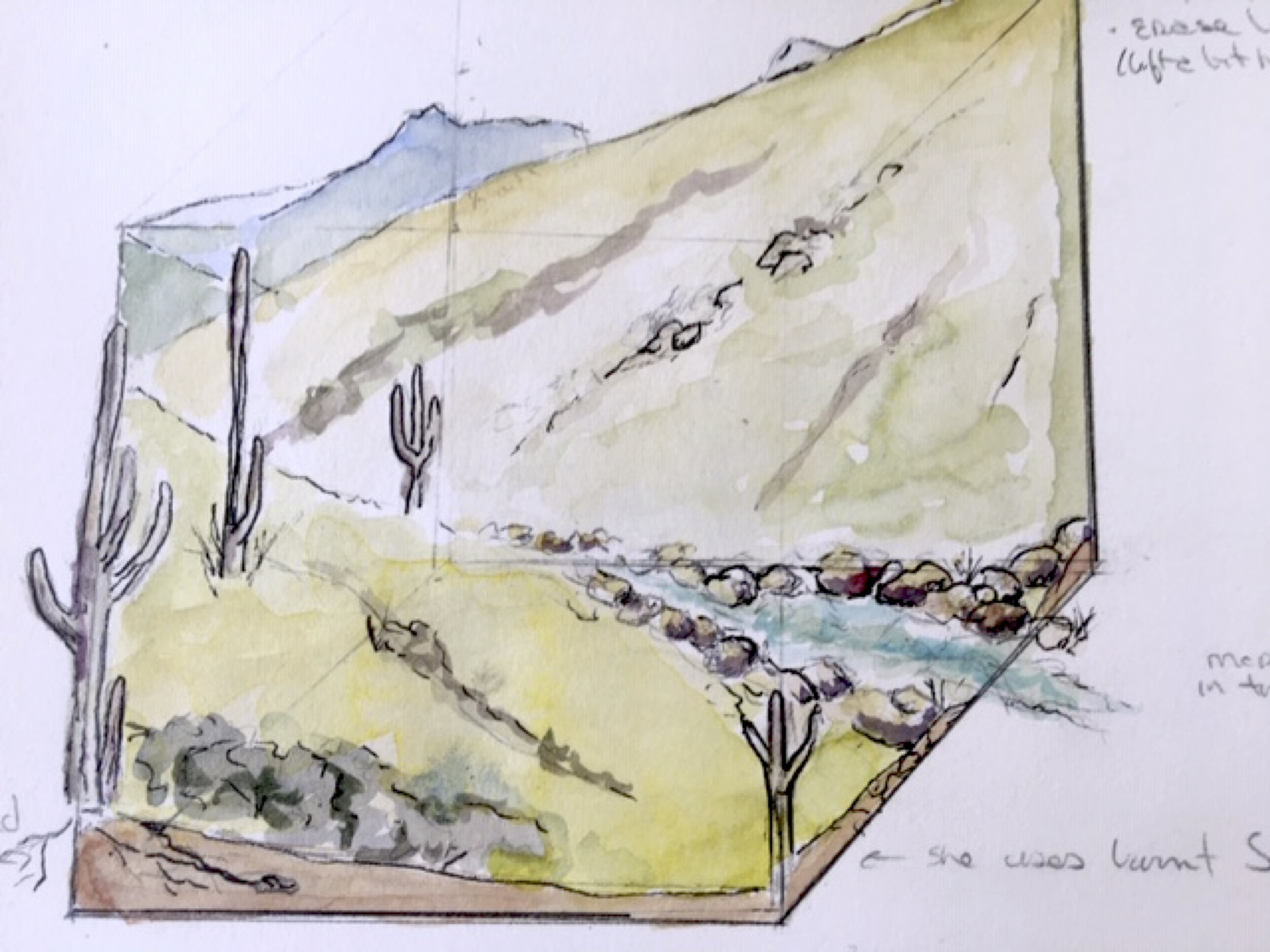
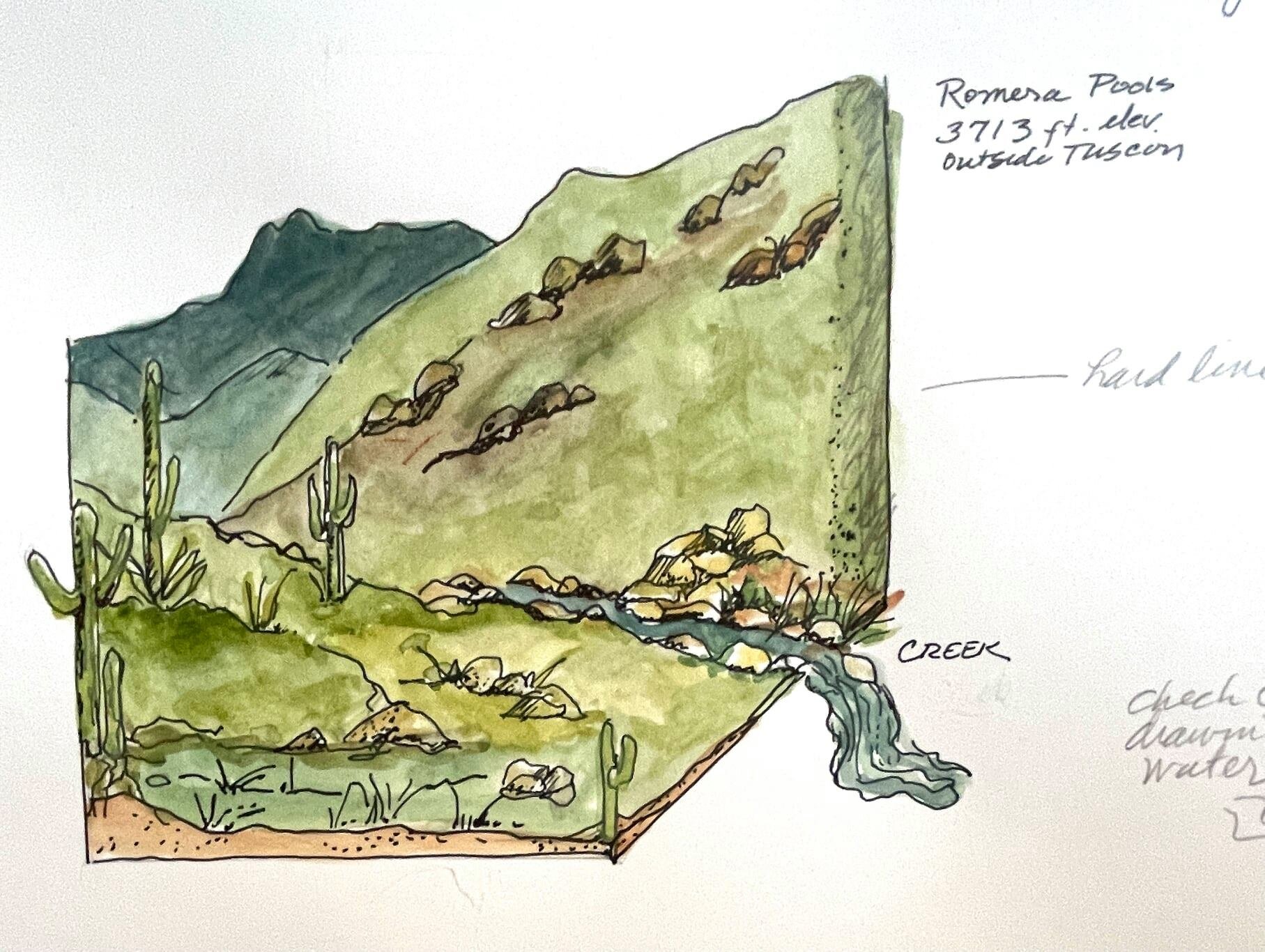
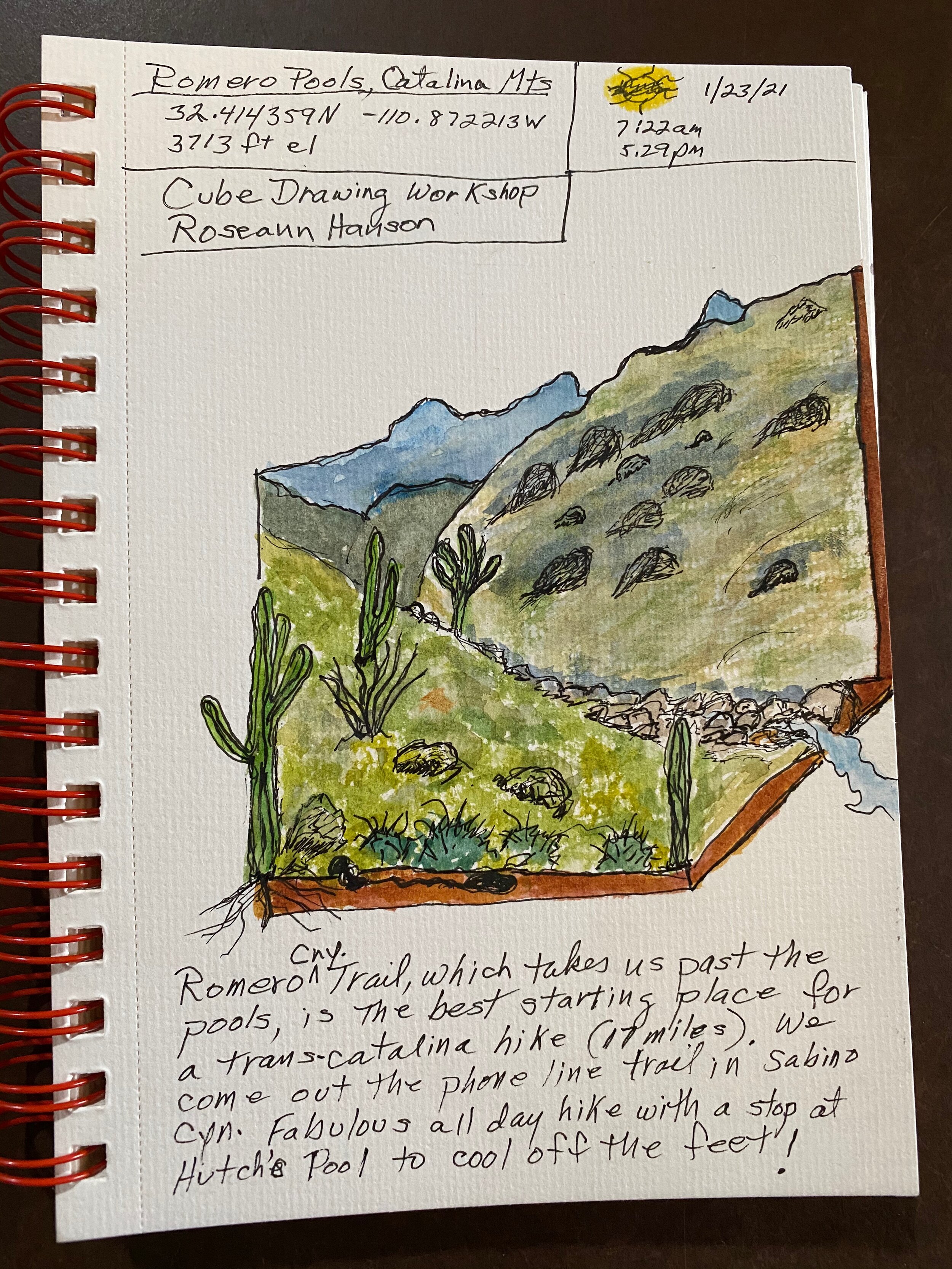
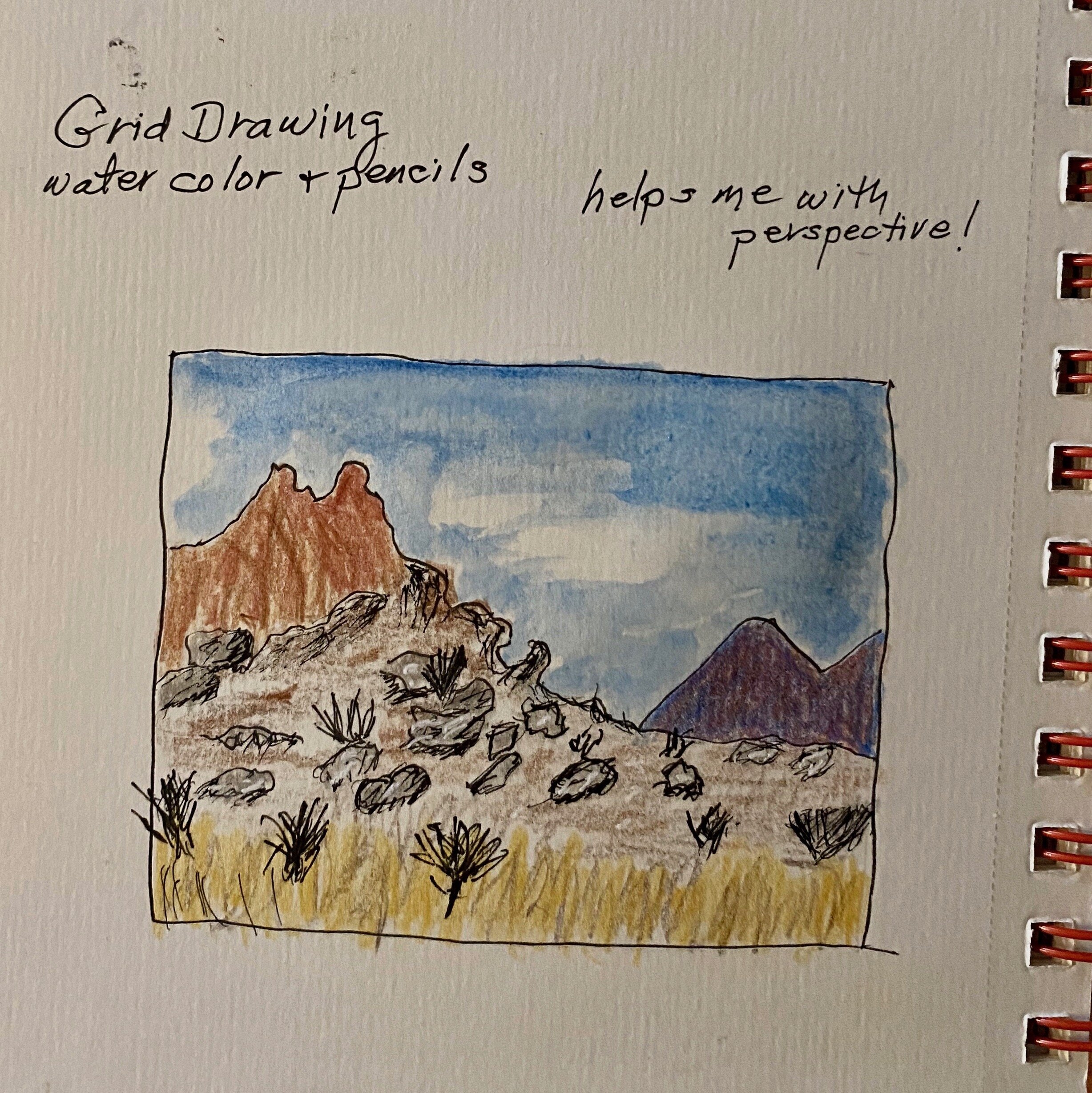
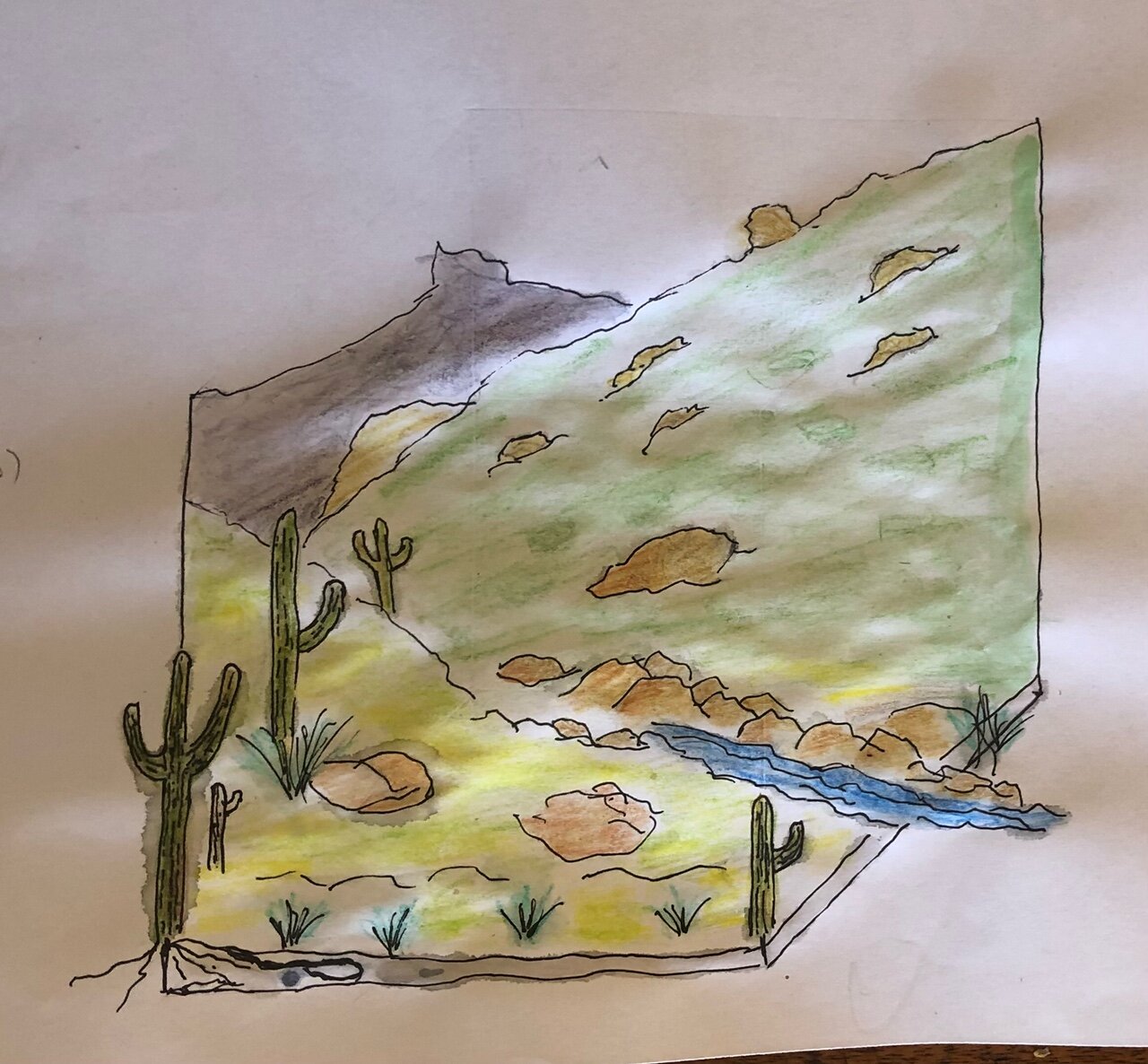
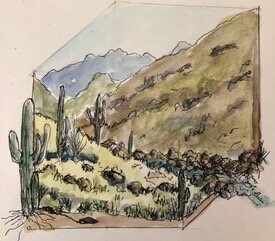
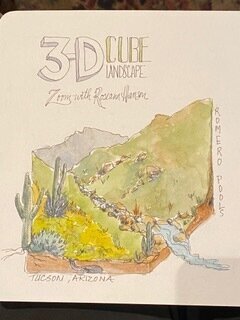
Support free tutorials! Click to contribute to the Tip Jar!
Virtual Field Trip: Unique Grasslands of the World
Join me as we explore three of the world’s grasslands—Australia’s Southern Tablelands in New South Wales, Brazil’s Cerrado, and Alberta’s Southern Prairies—to observe, take notes on, and sketch some well-known animals as well as some lesser-known and fascinating creatures! Sketch along or just observe, I’ll narrate as I go to demonstrate why I choose to focus on what subjects and how to quickly capture them in your field notebooks and nature journals.



